
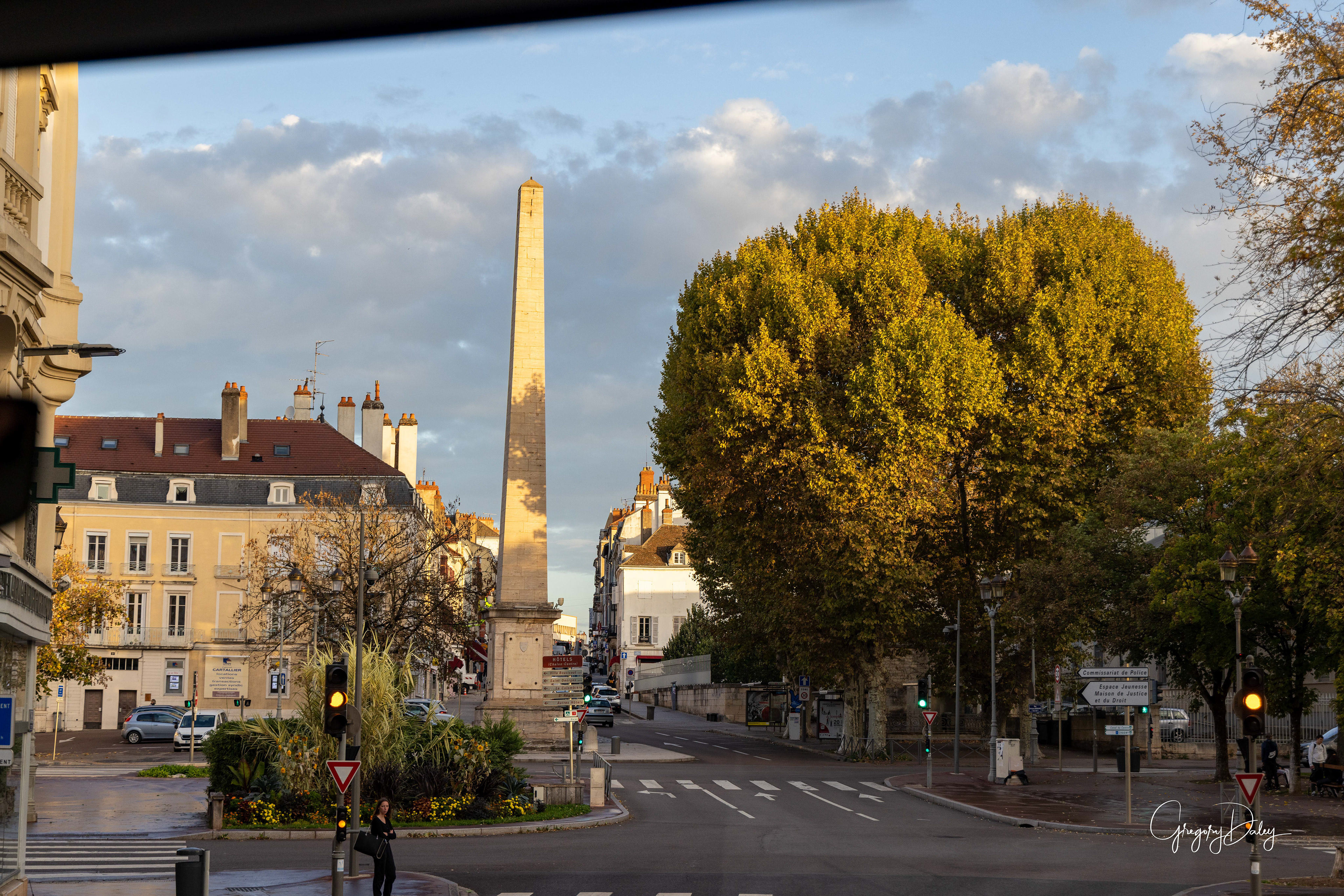



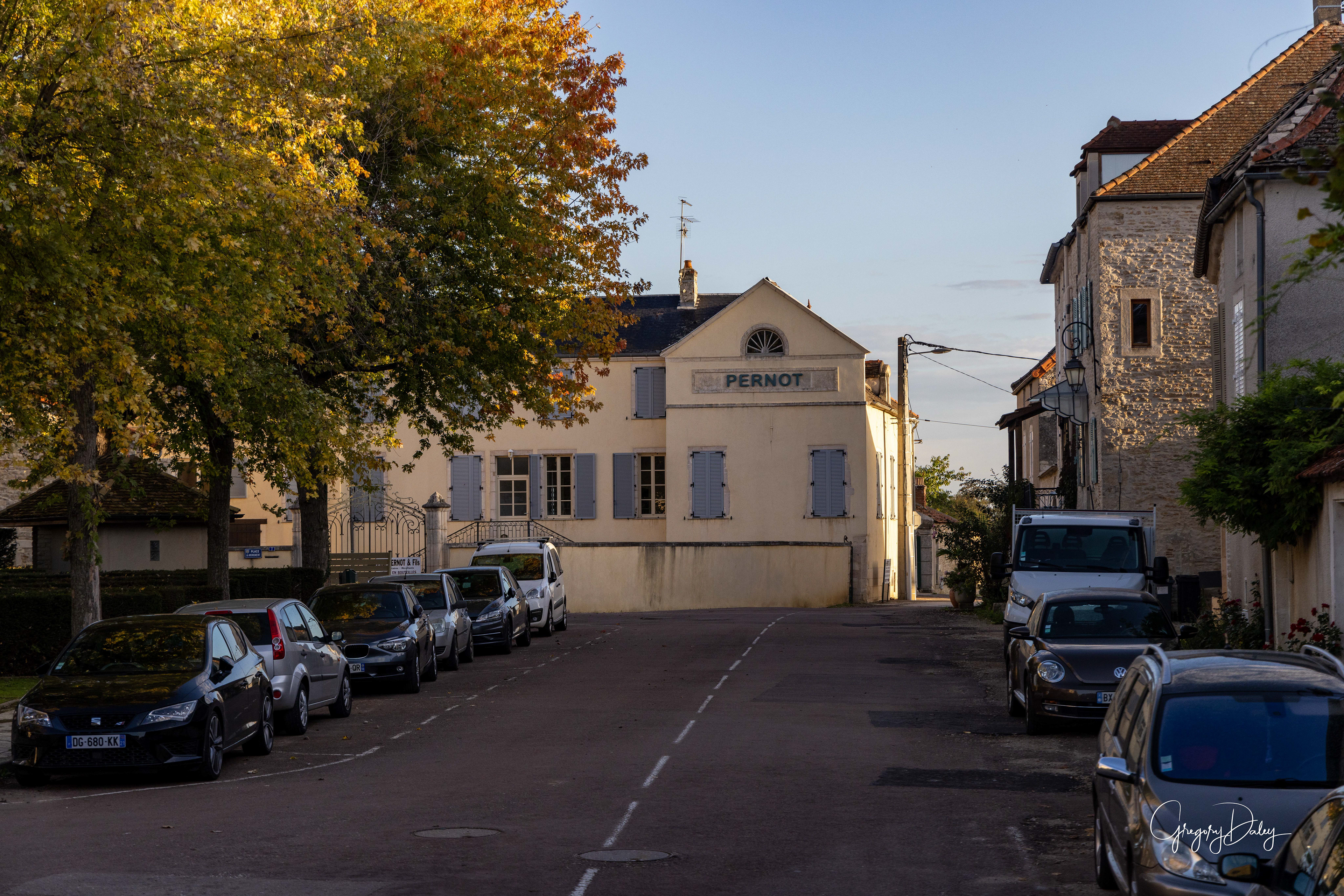

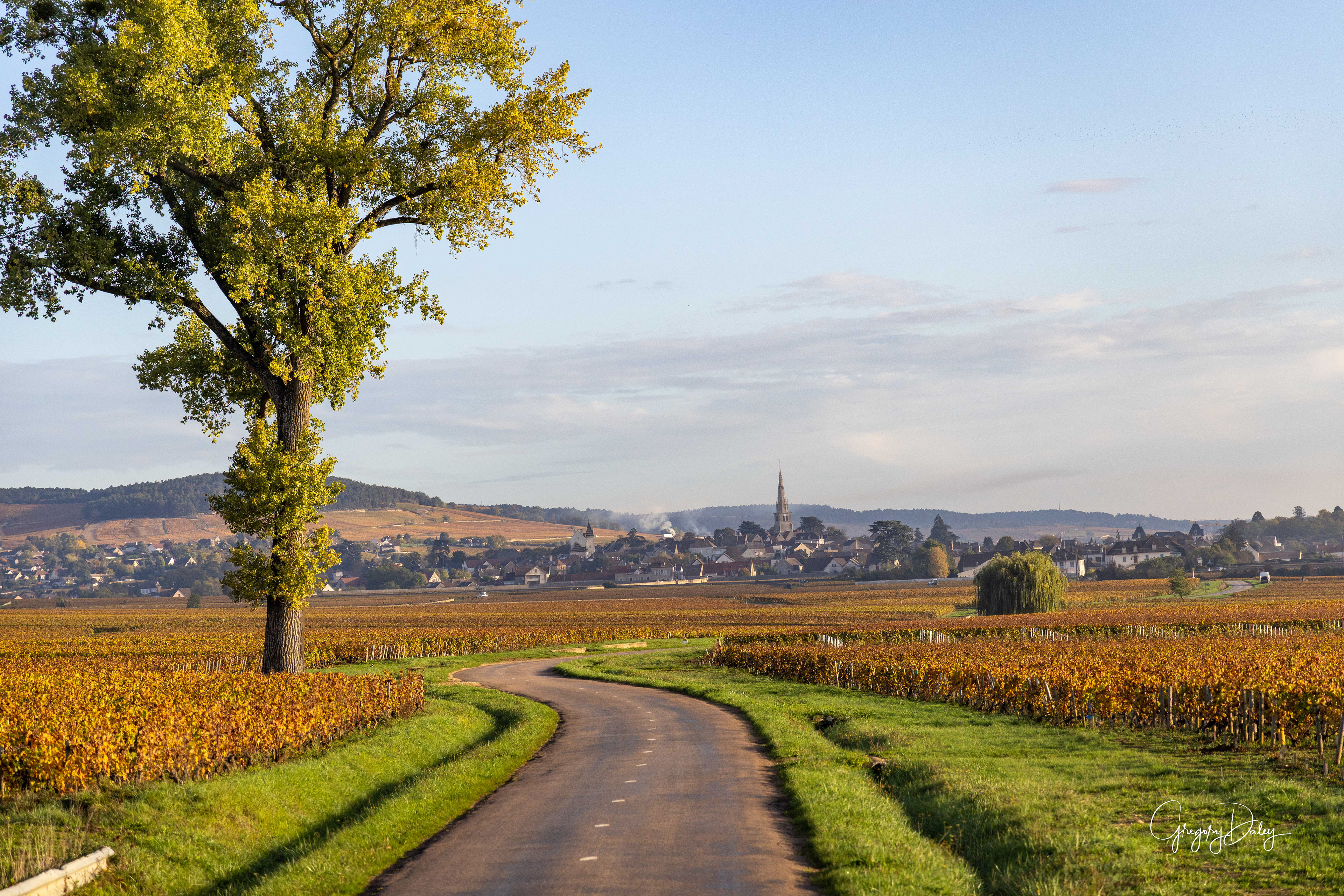
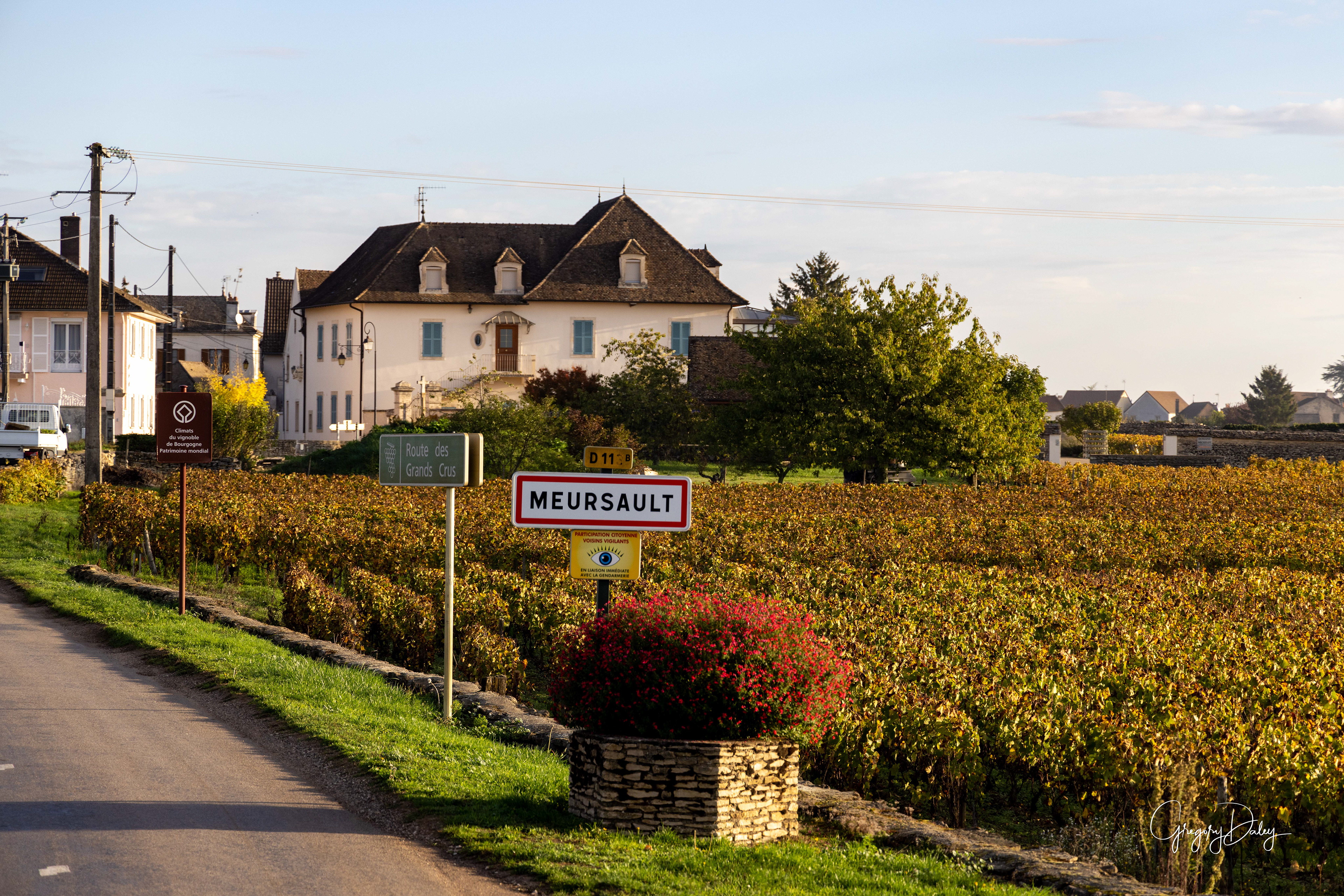
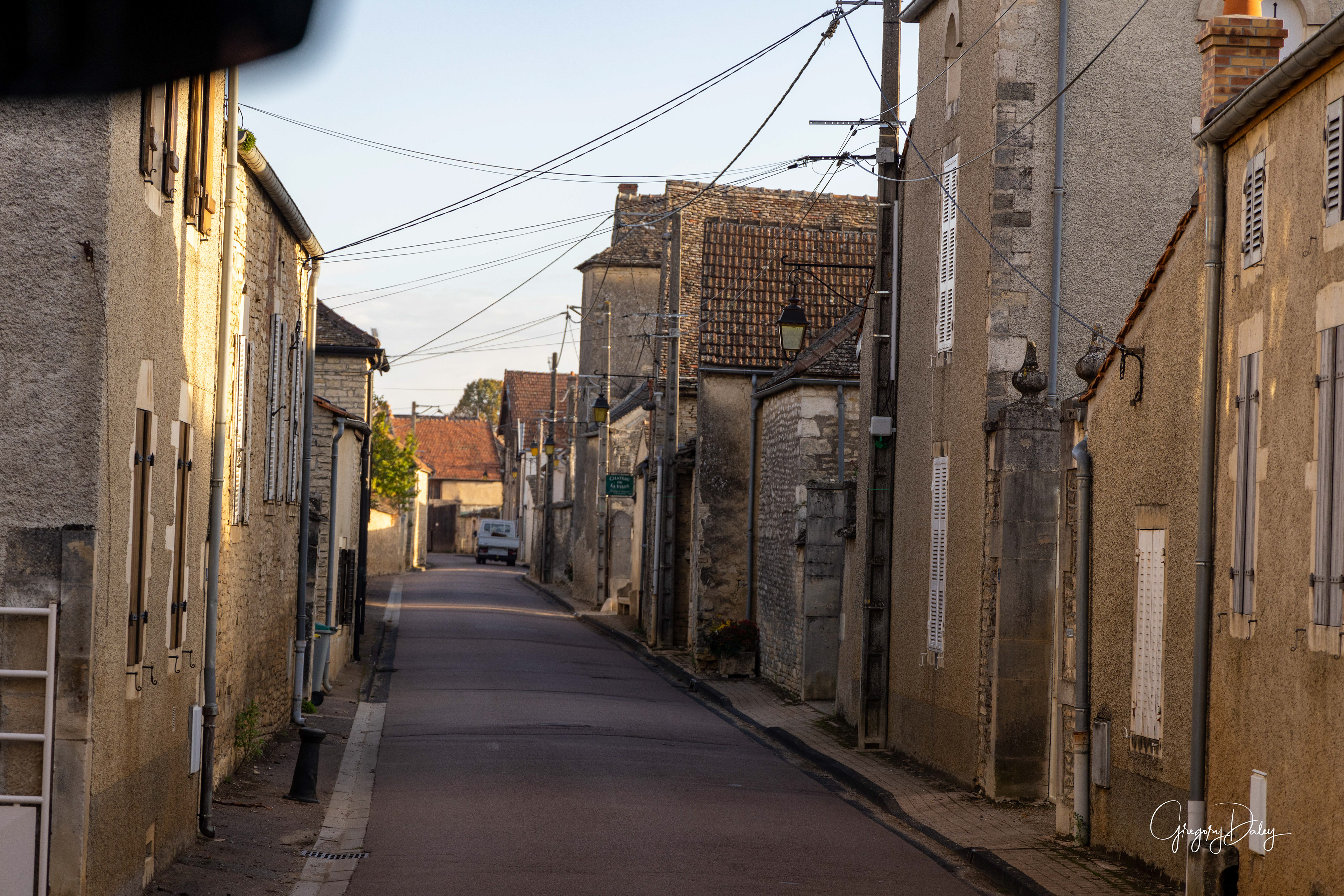



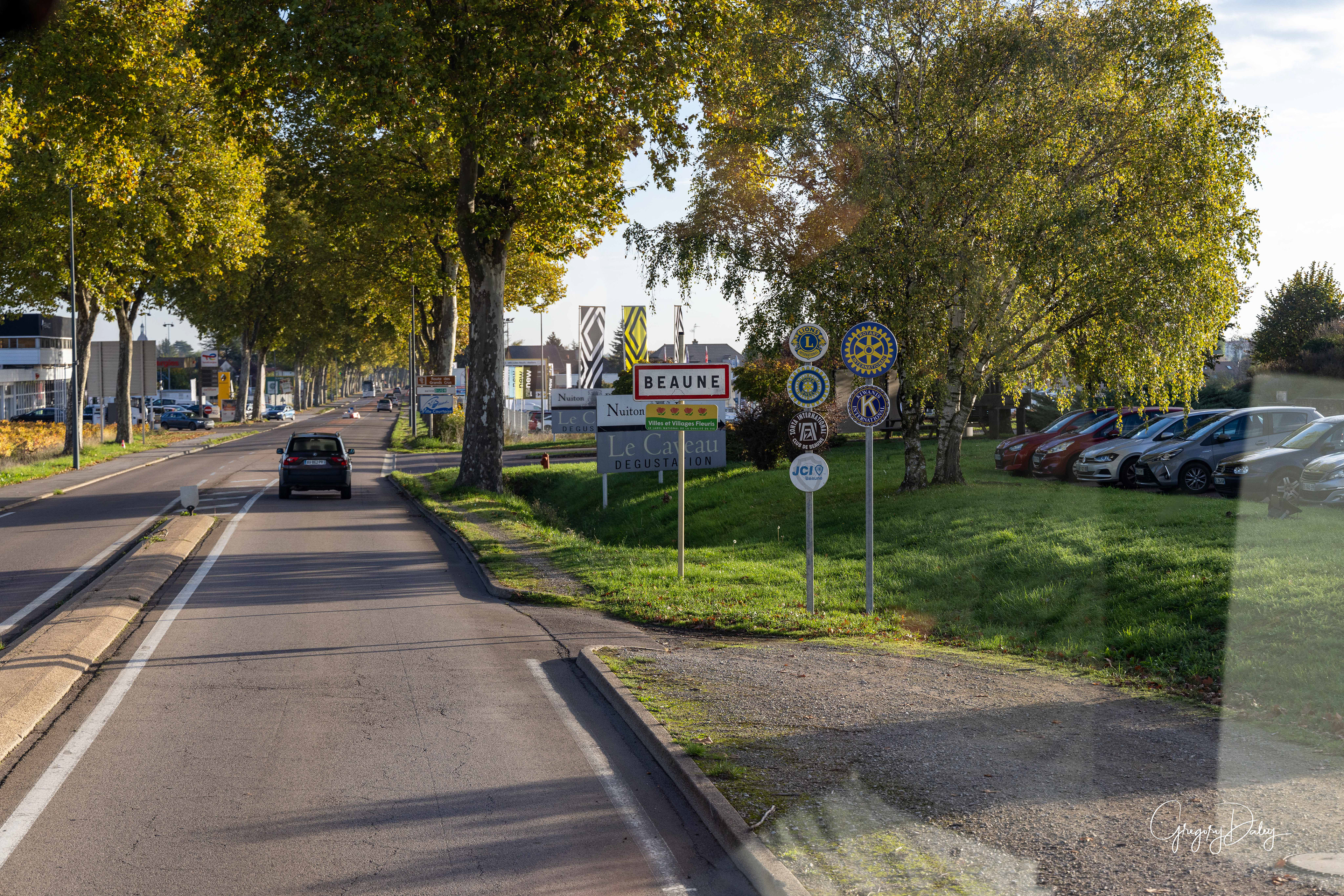

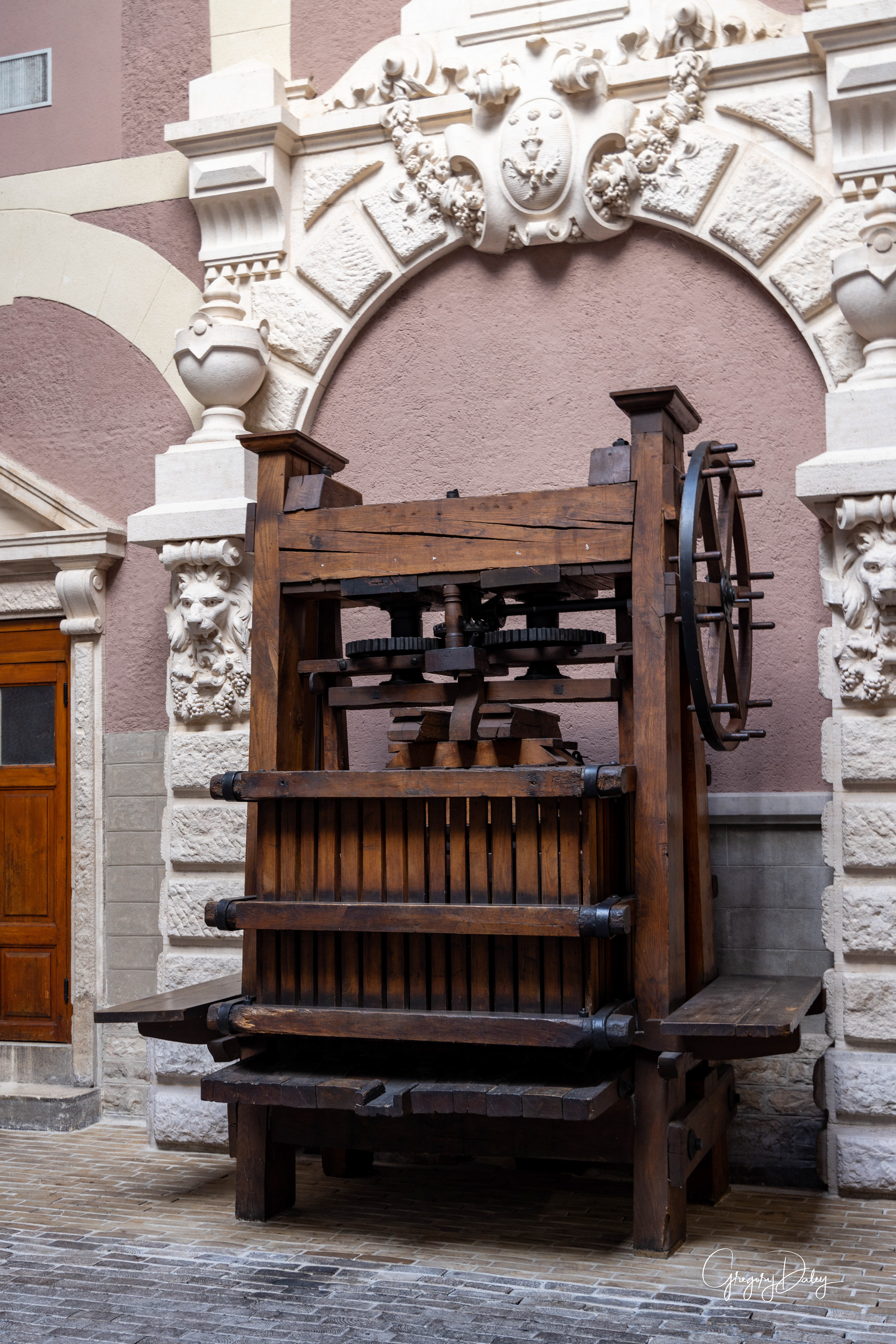


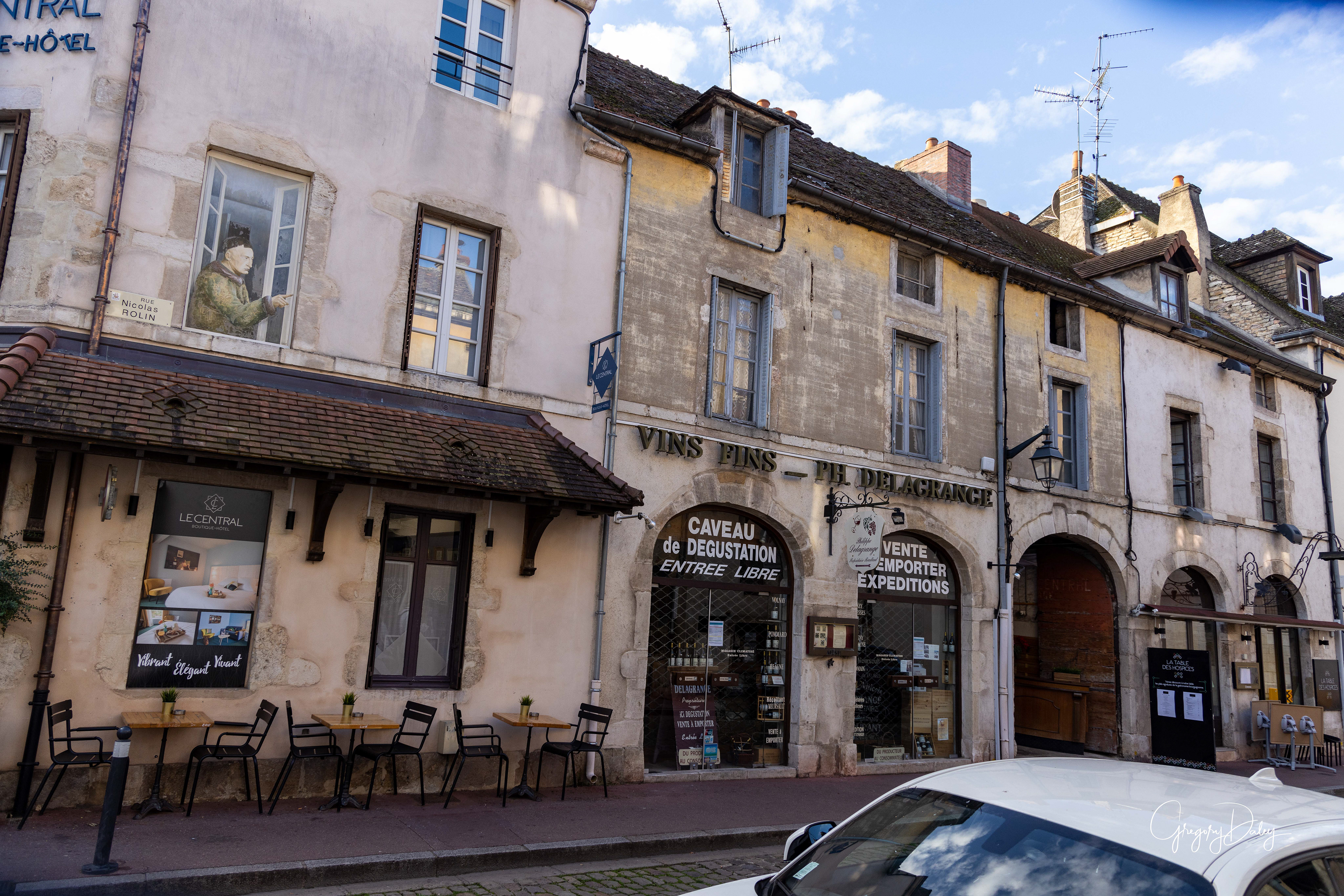

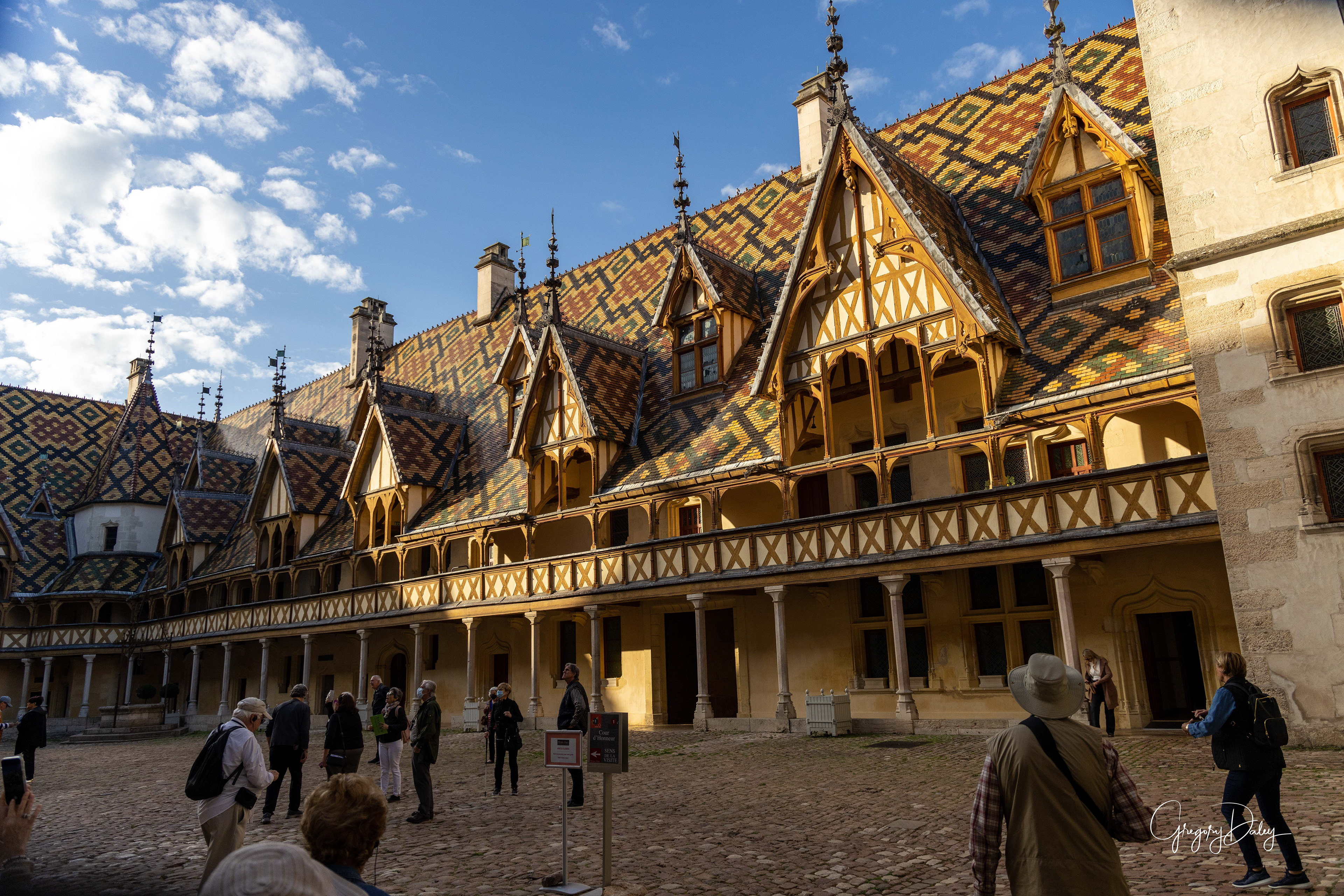
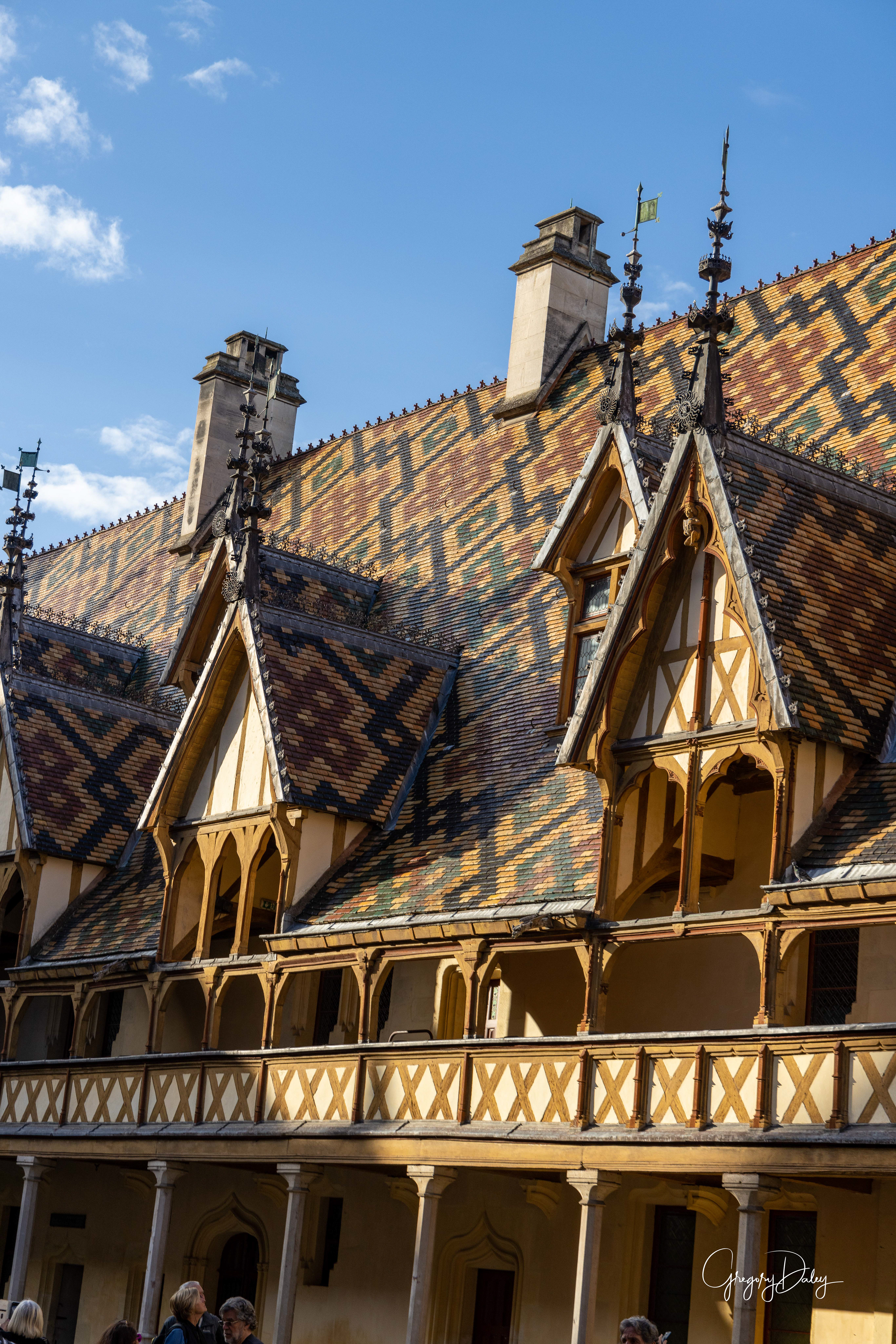
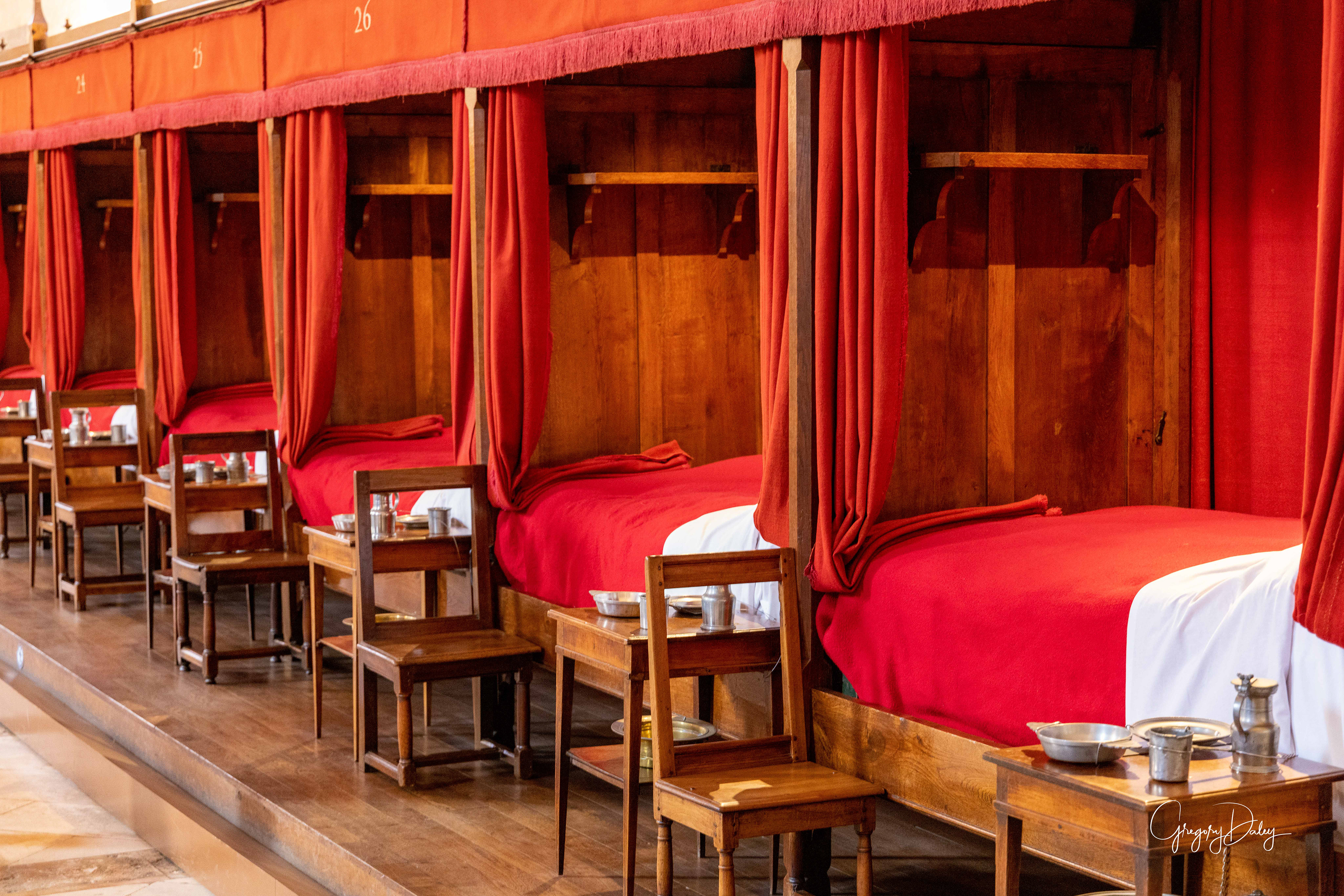
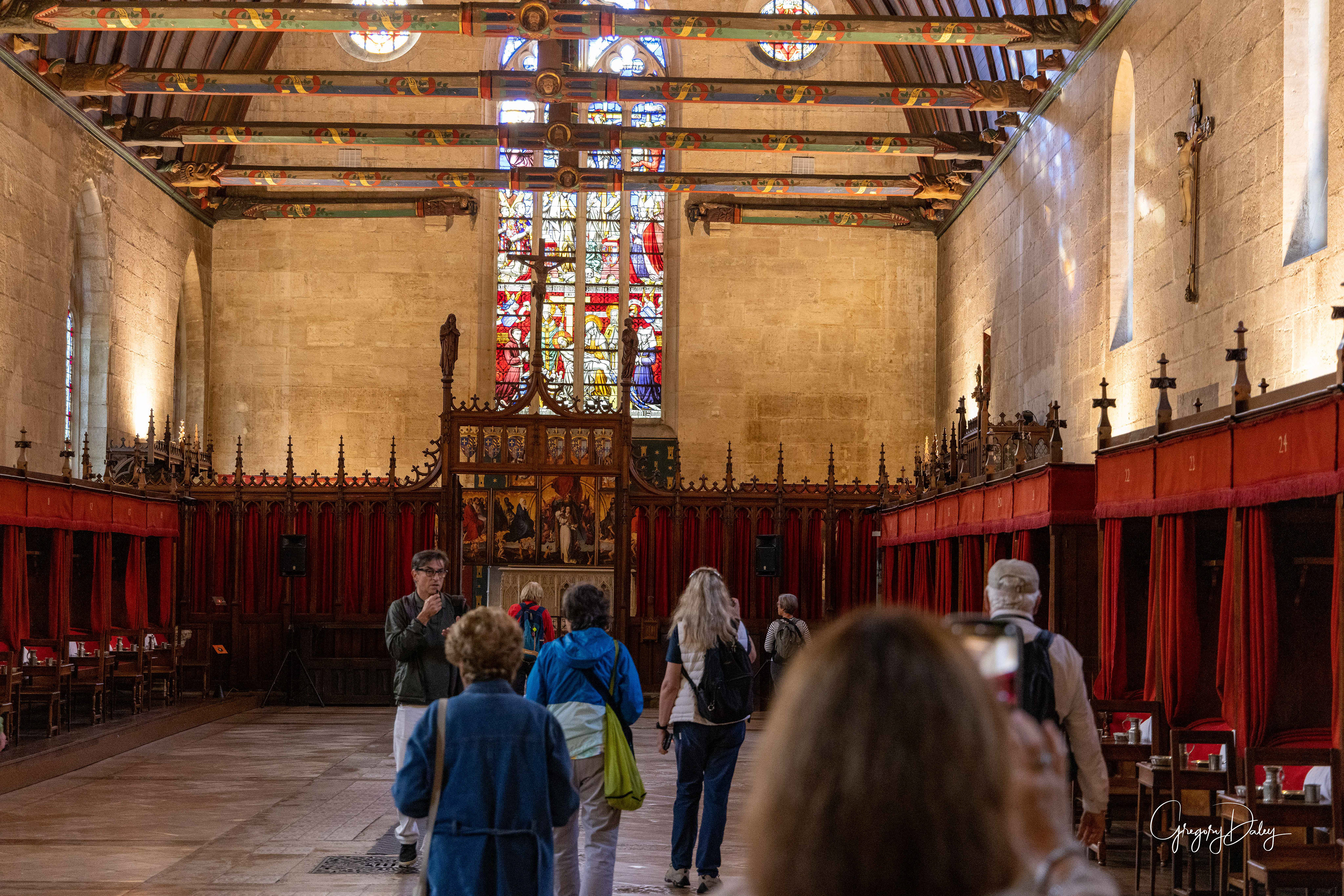

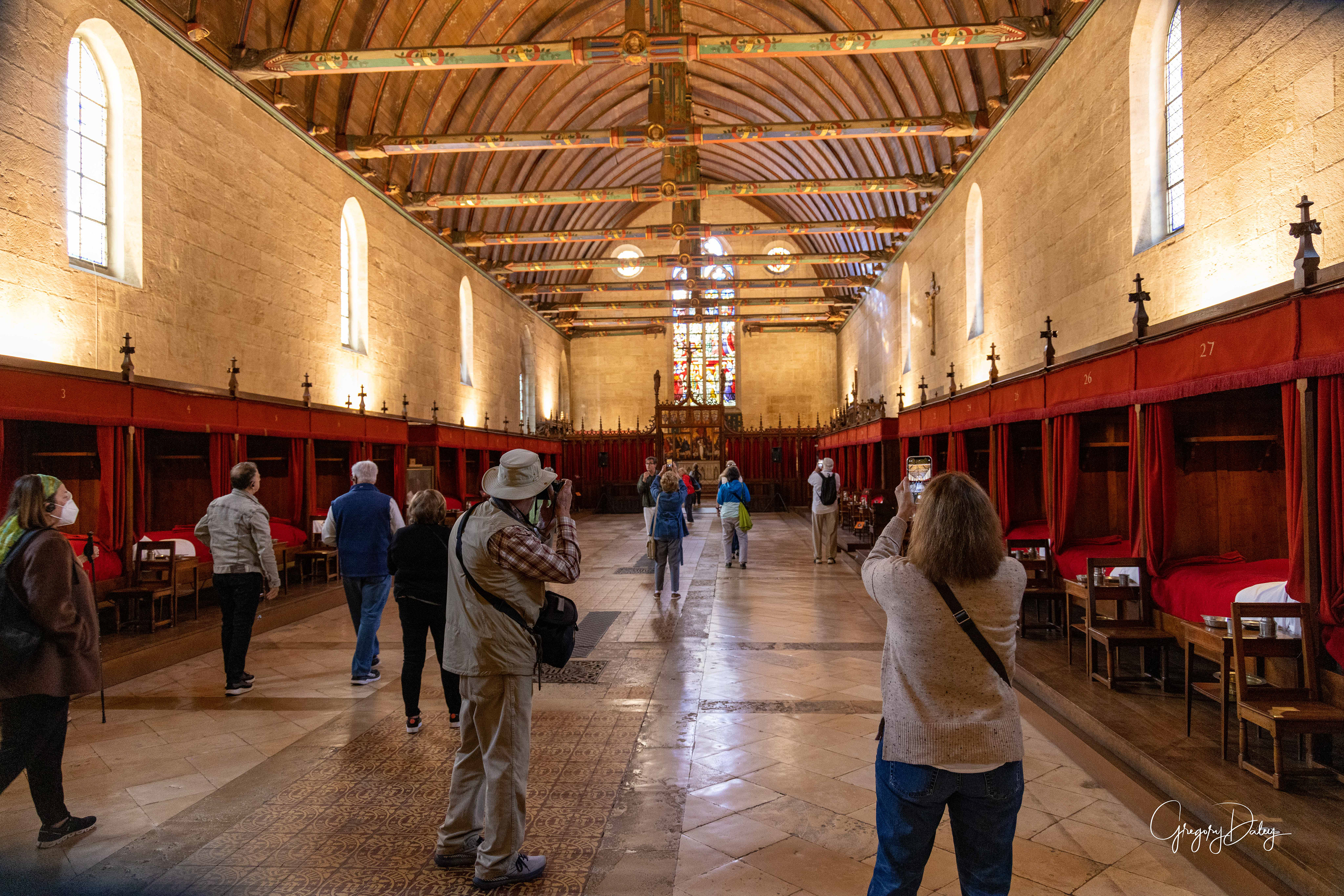
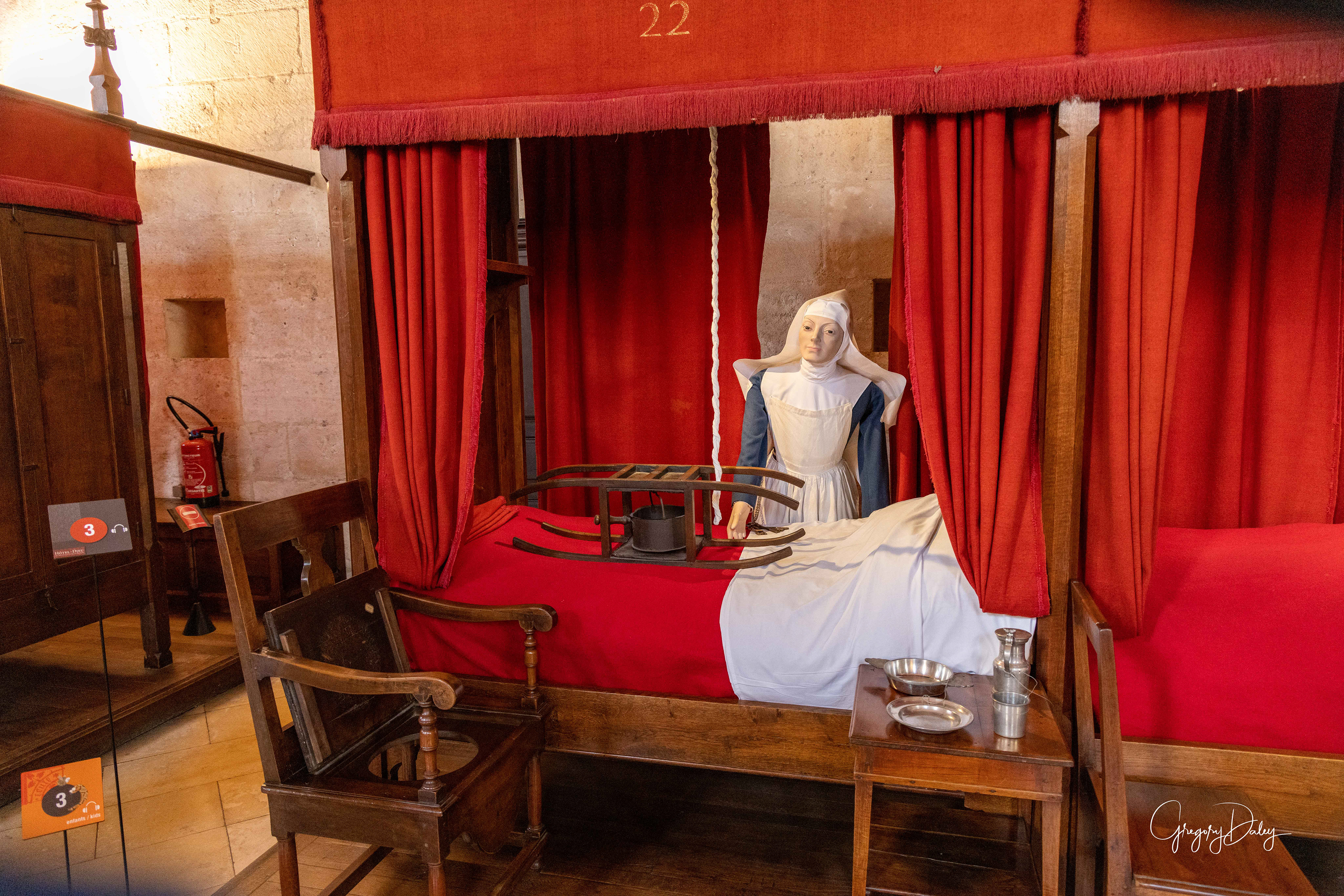


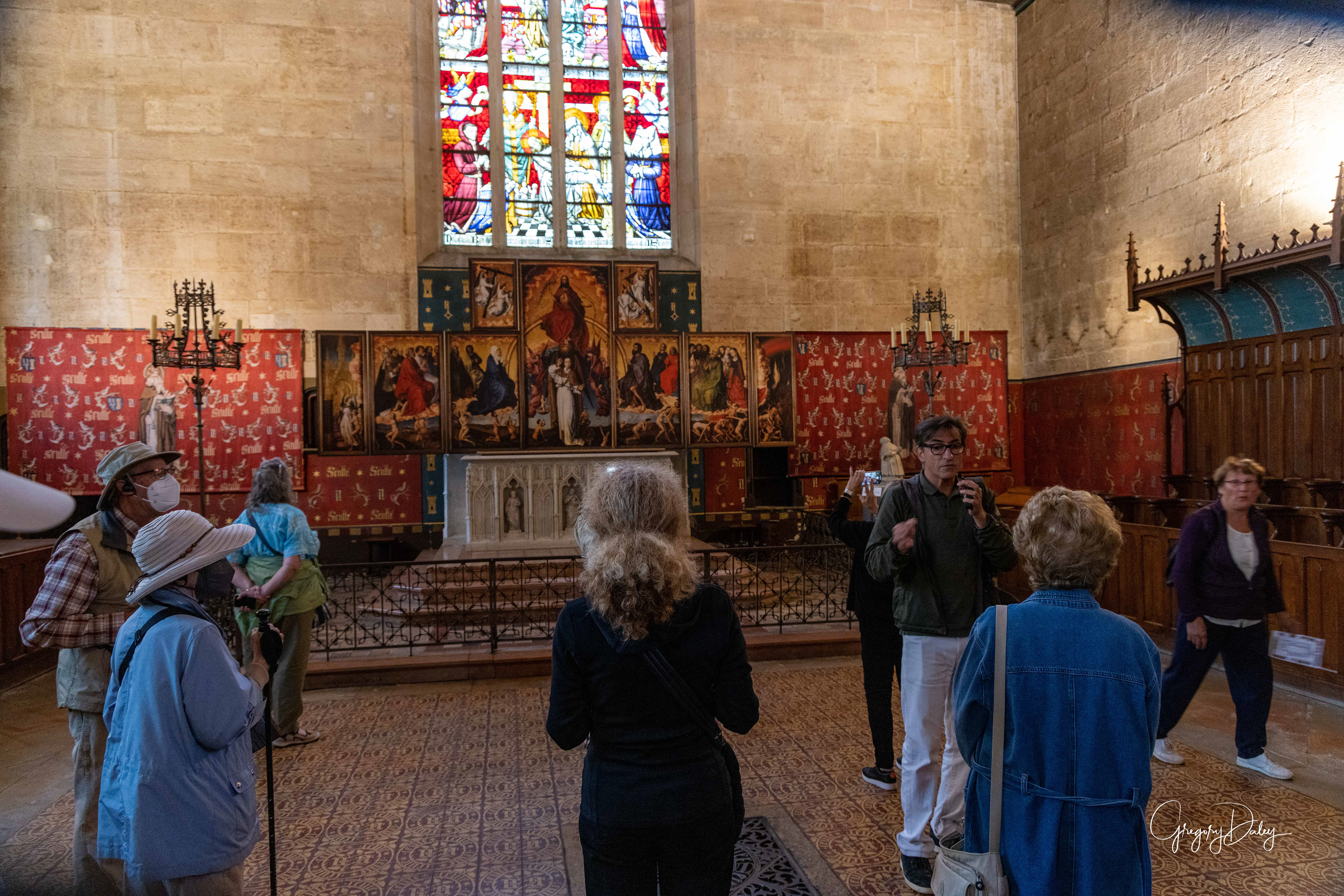

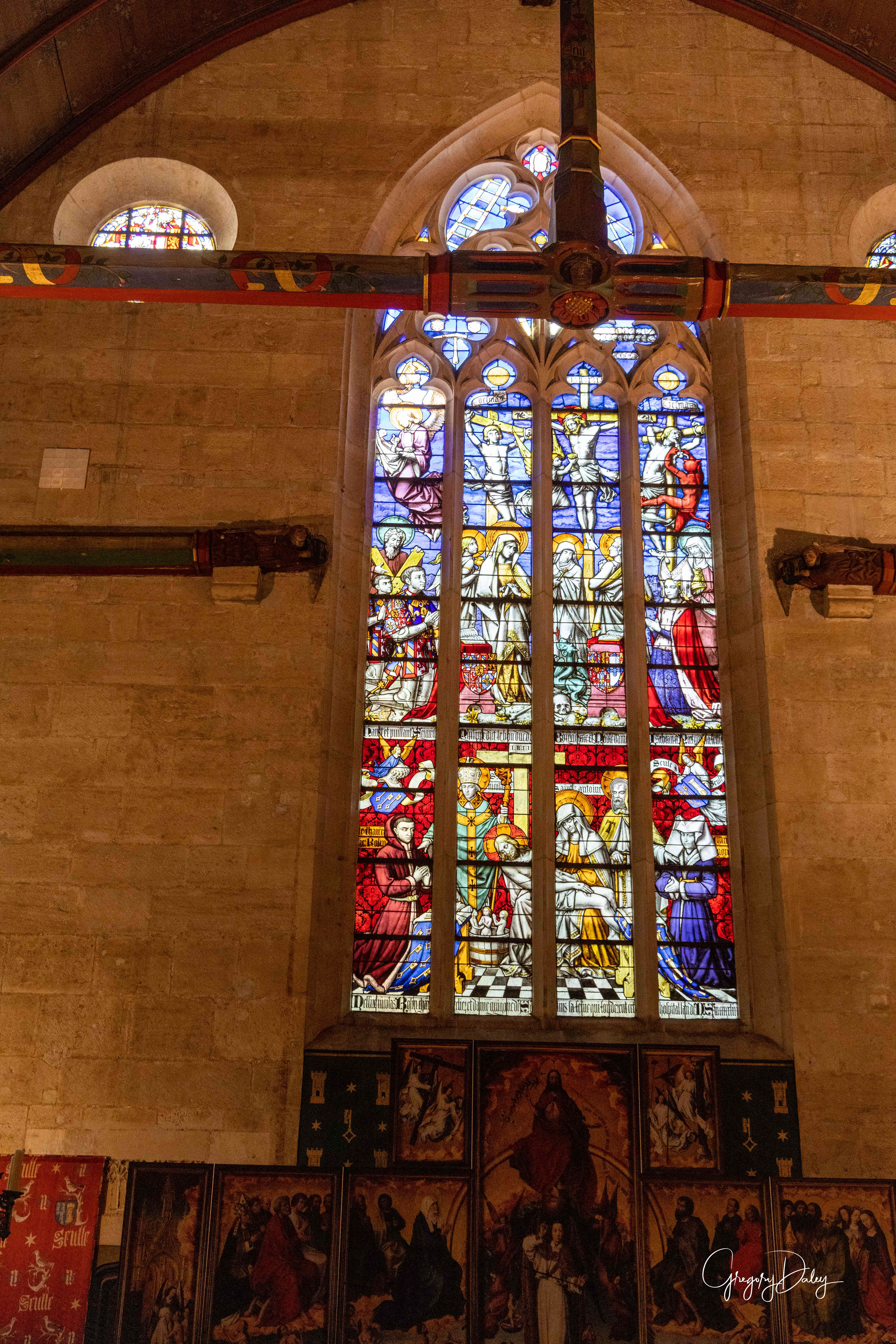
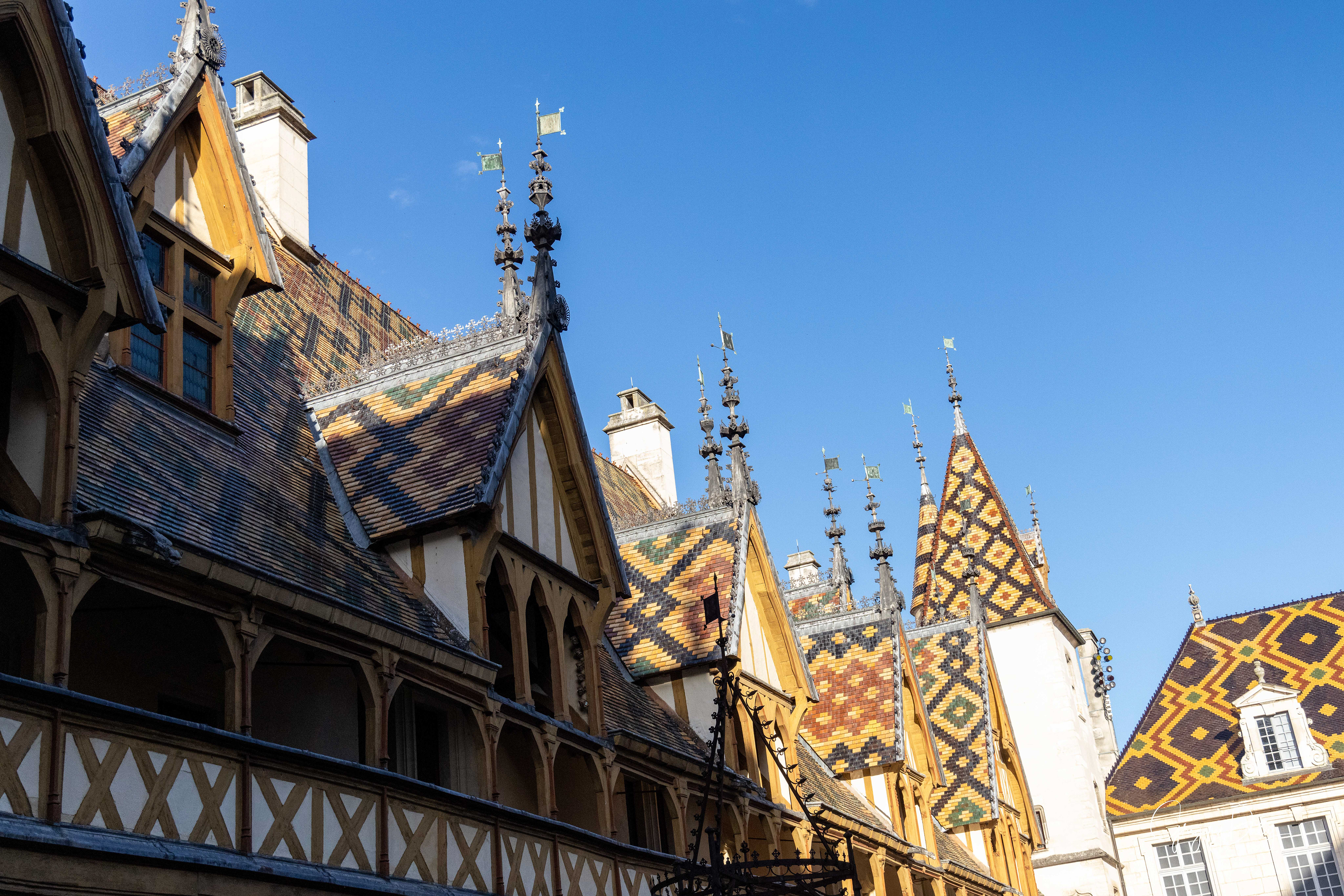
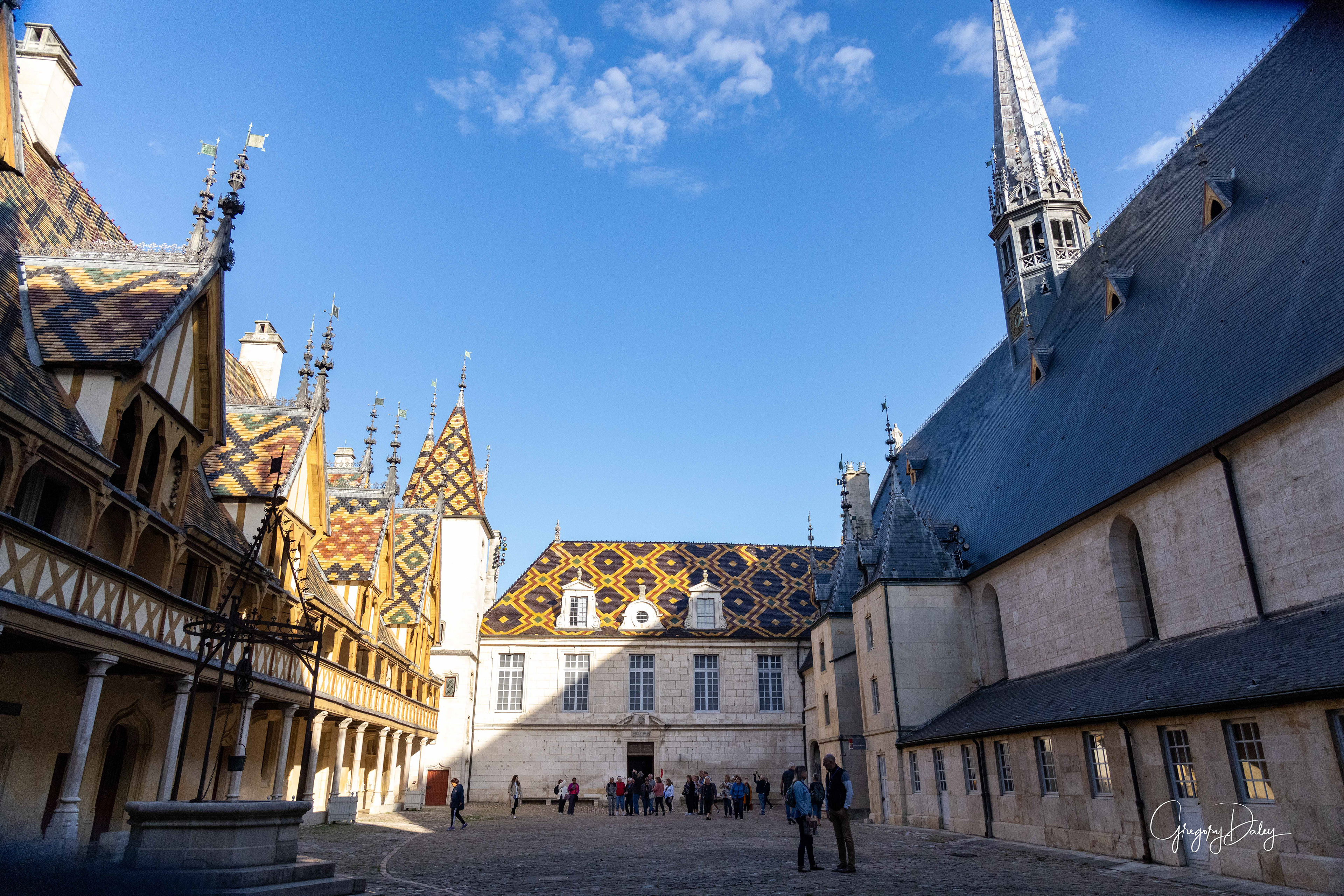
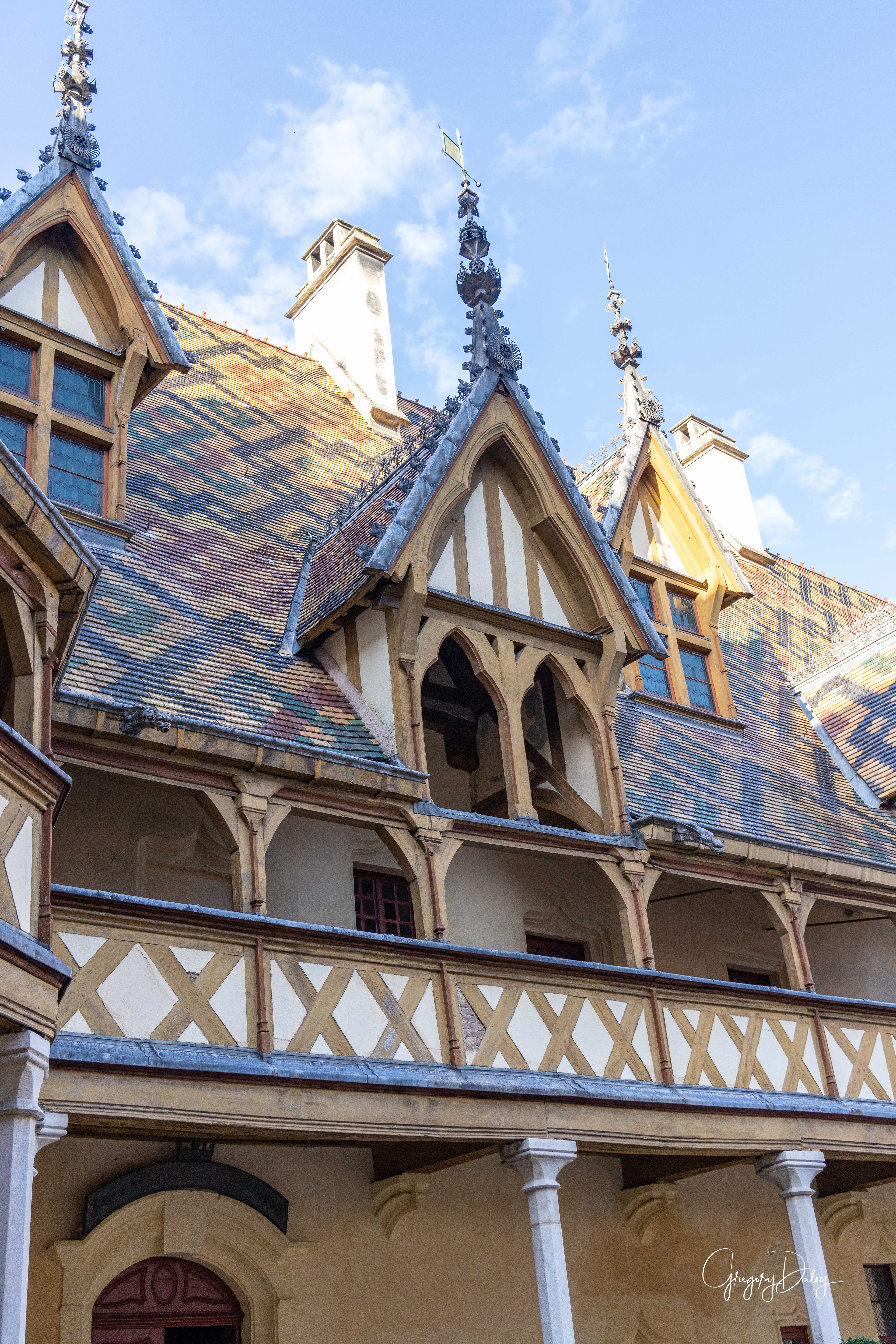
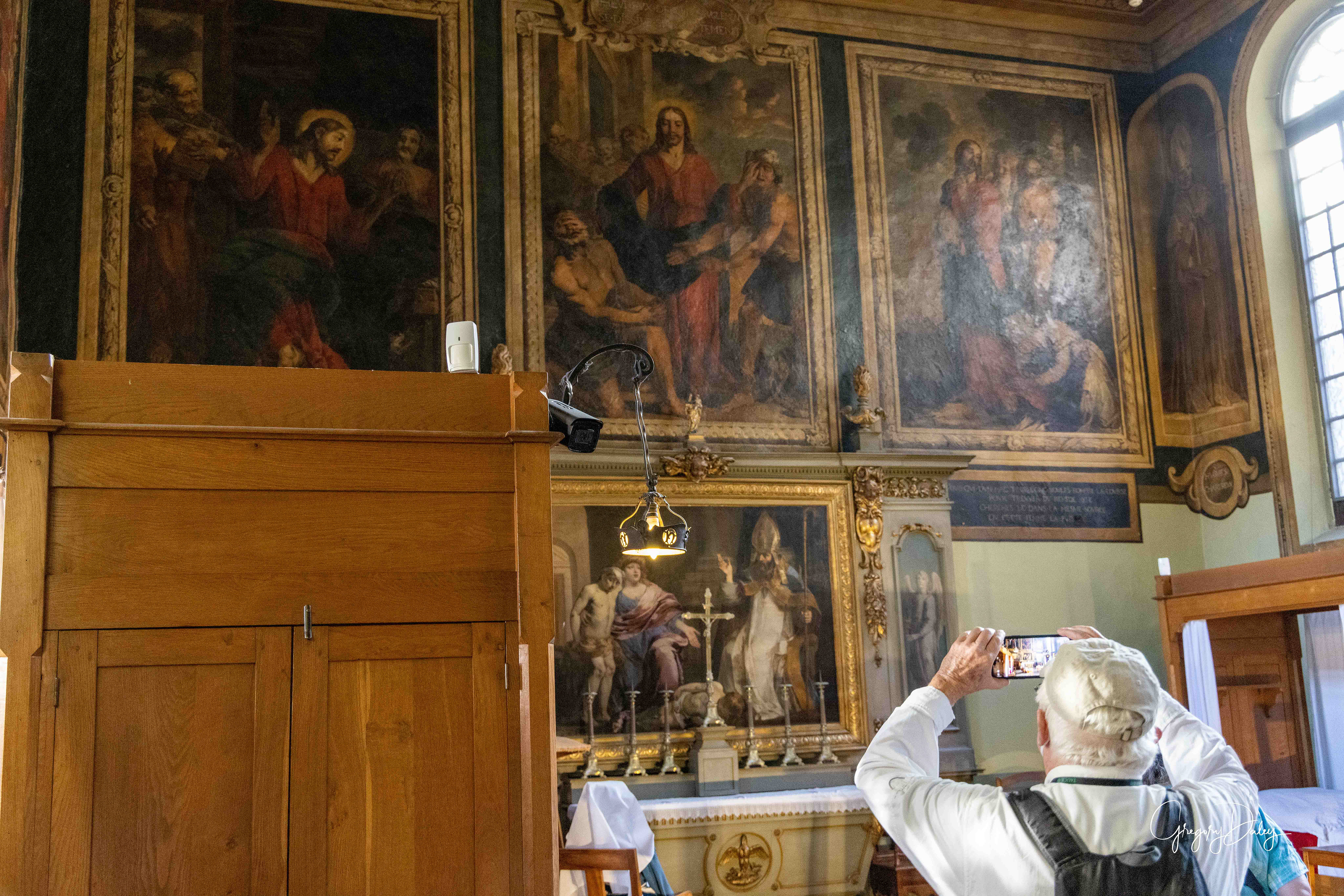

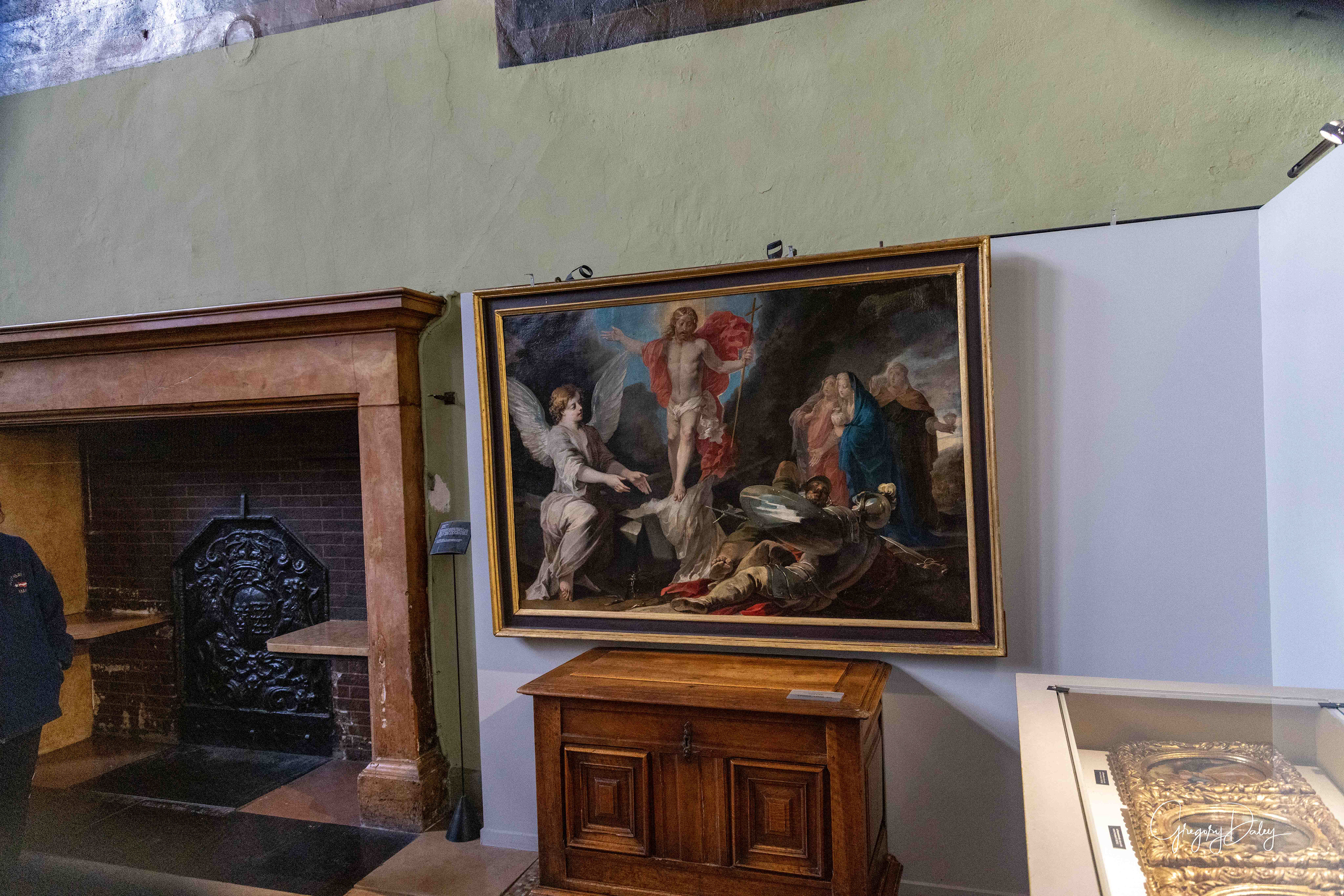
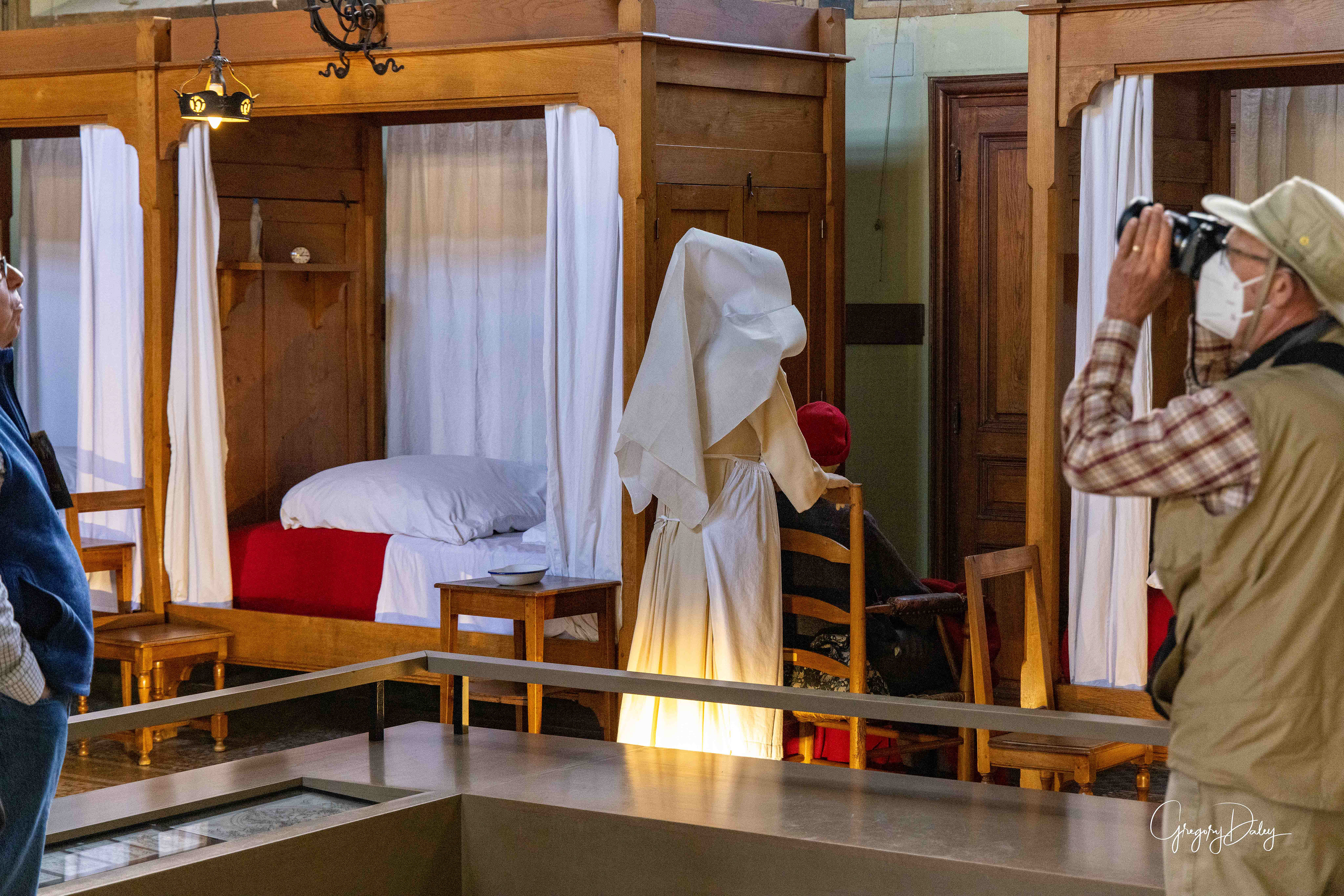
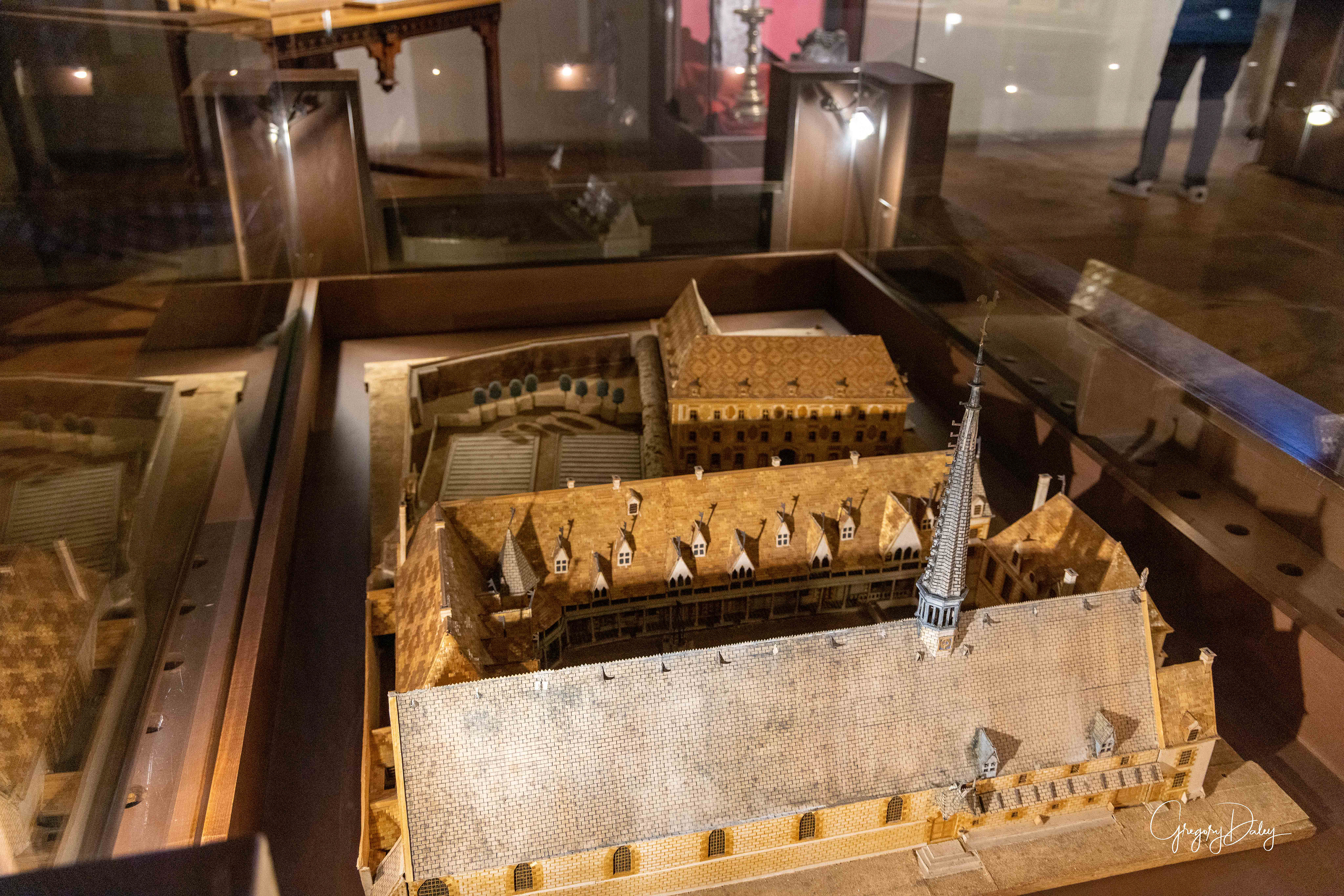
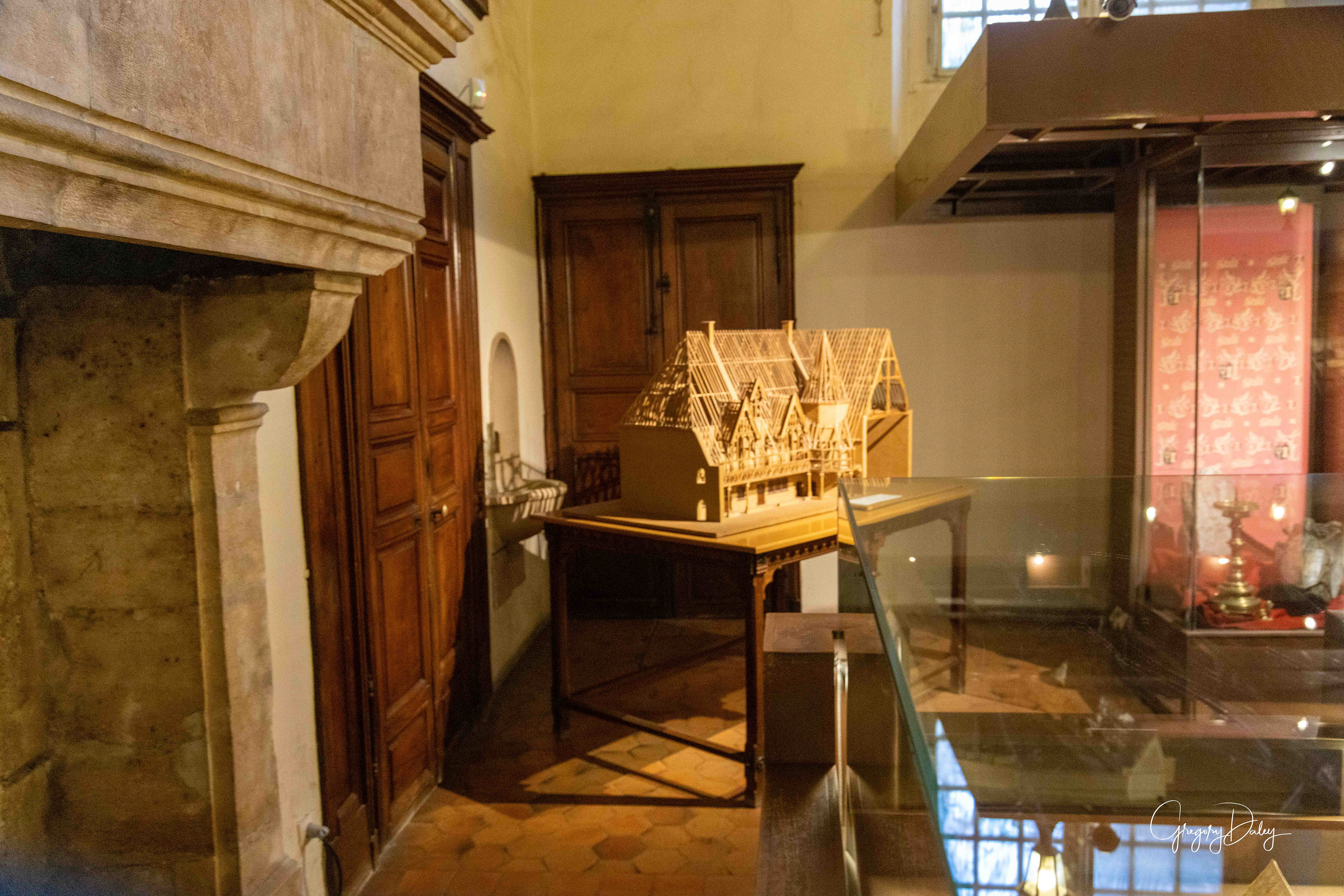
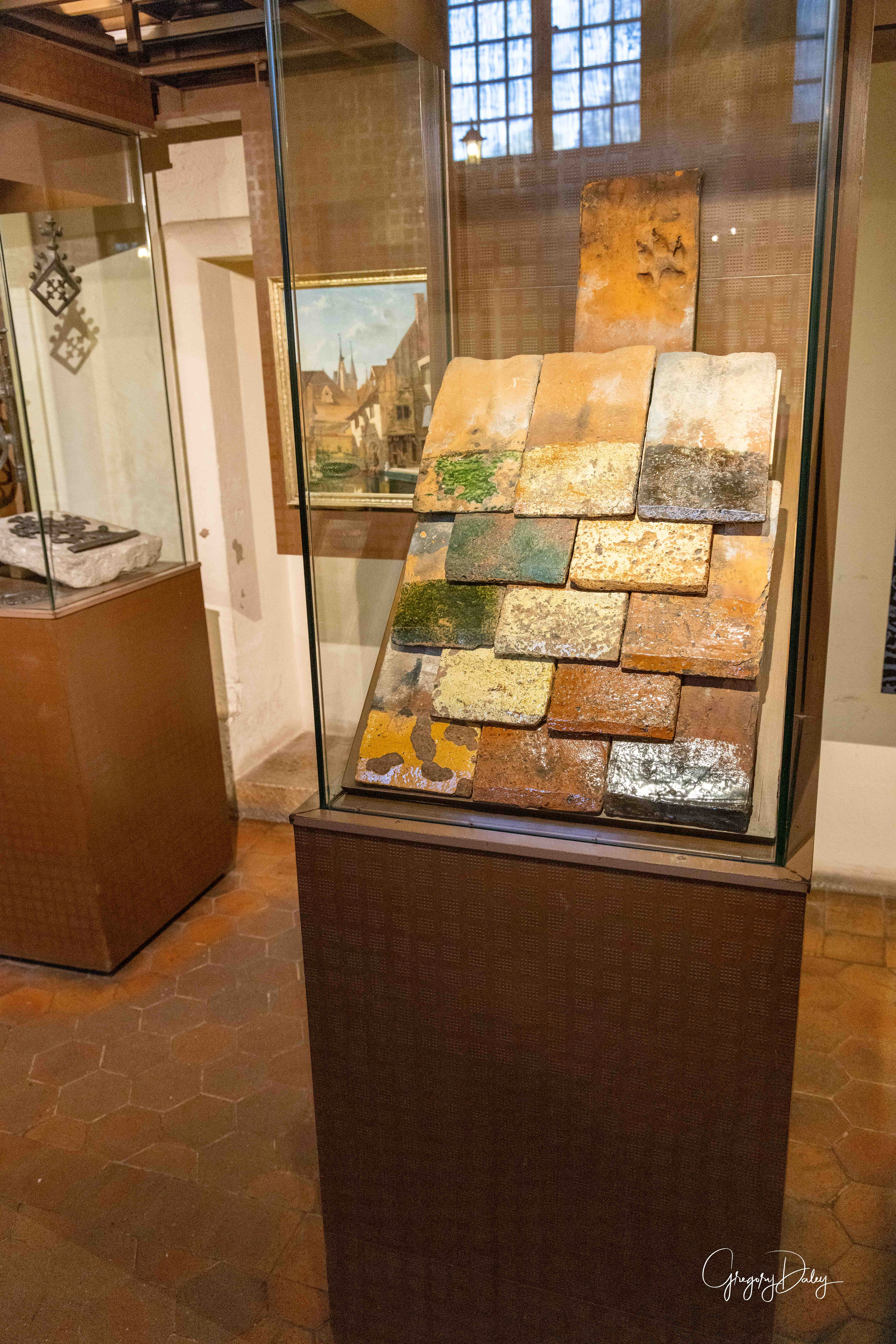

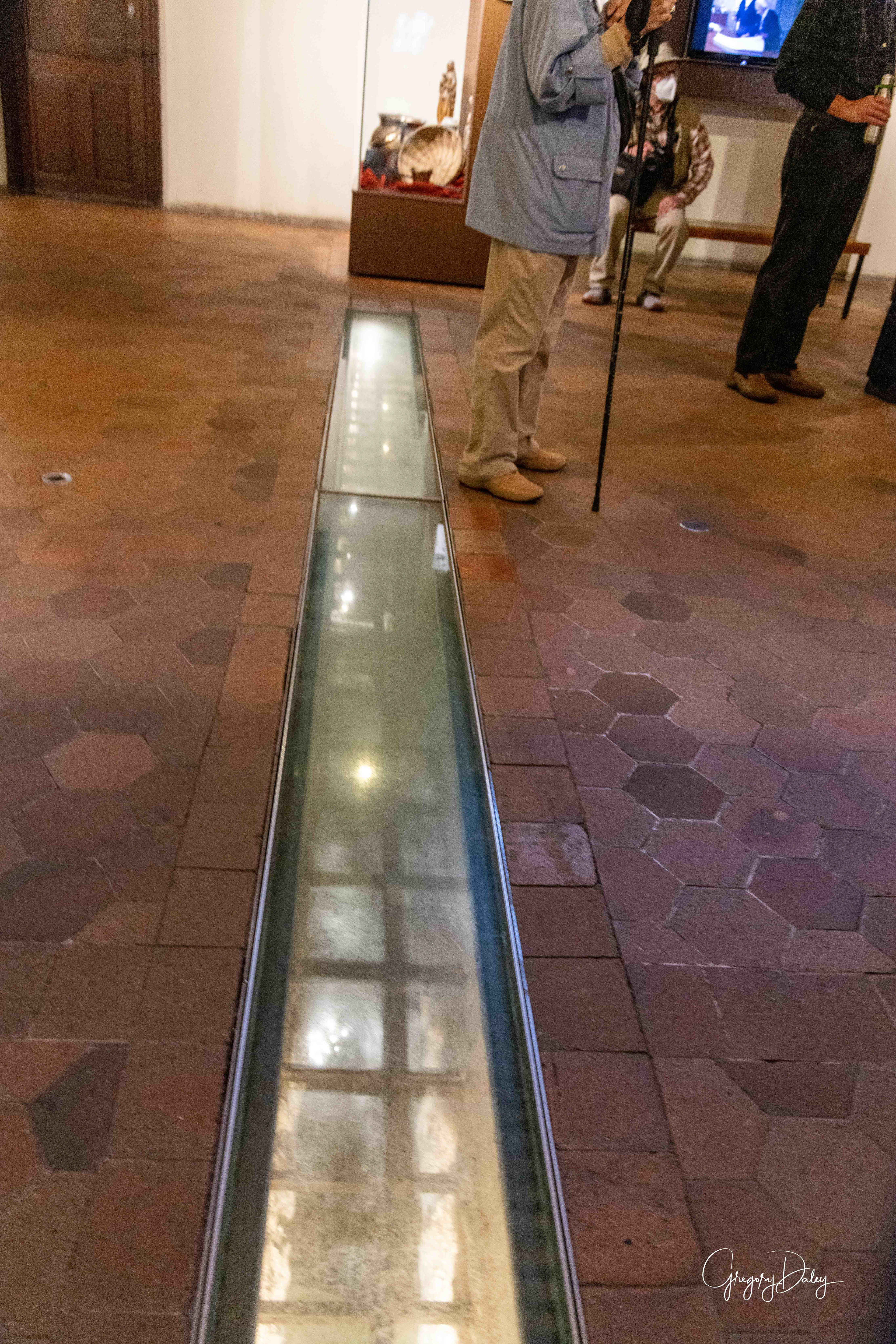
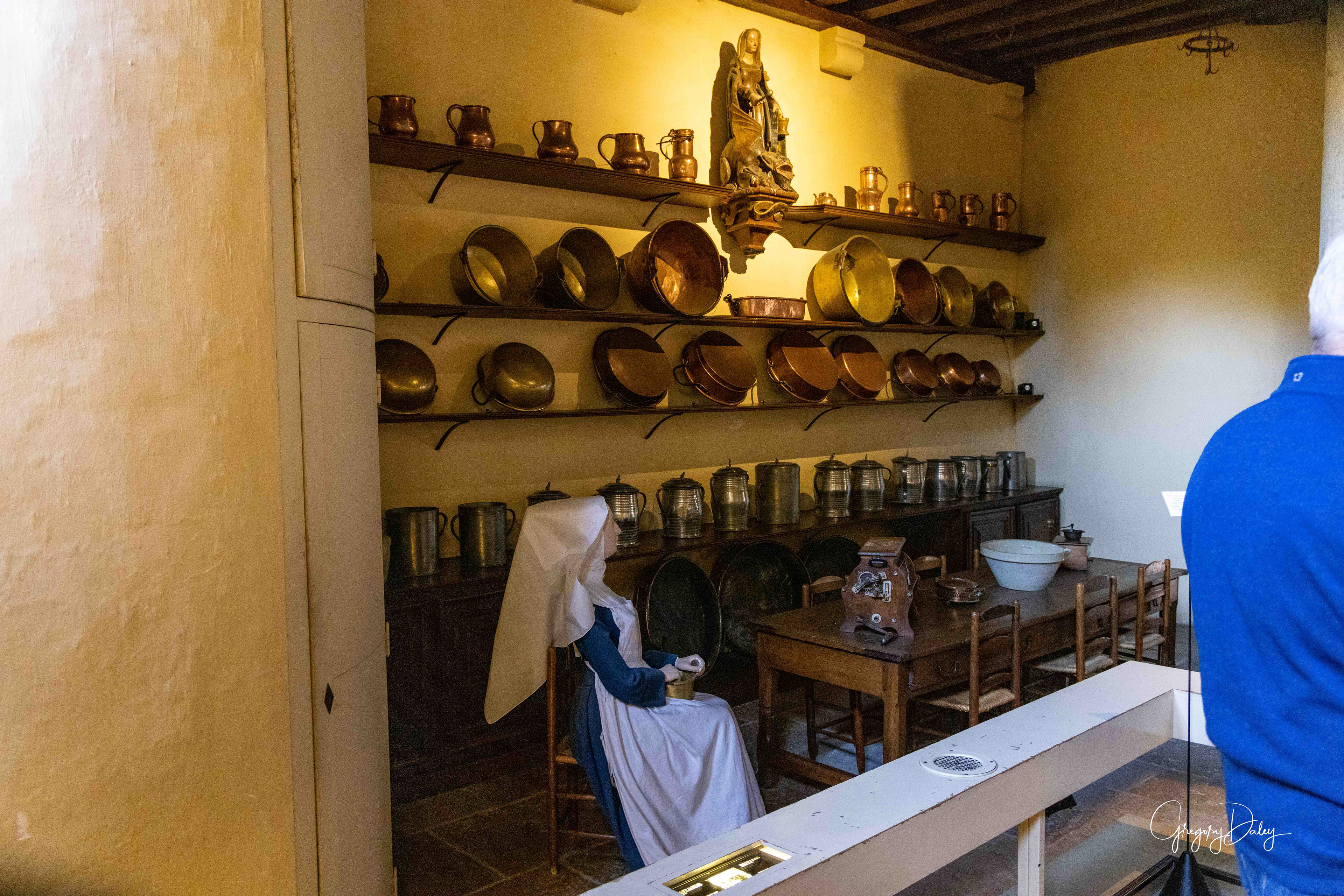
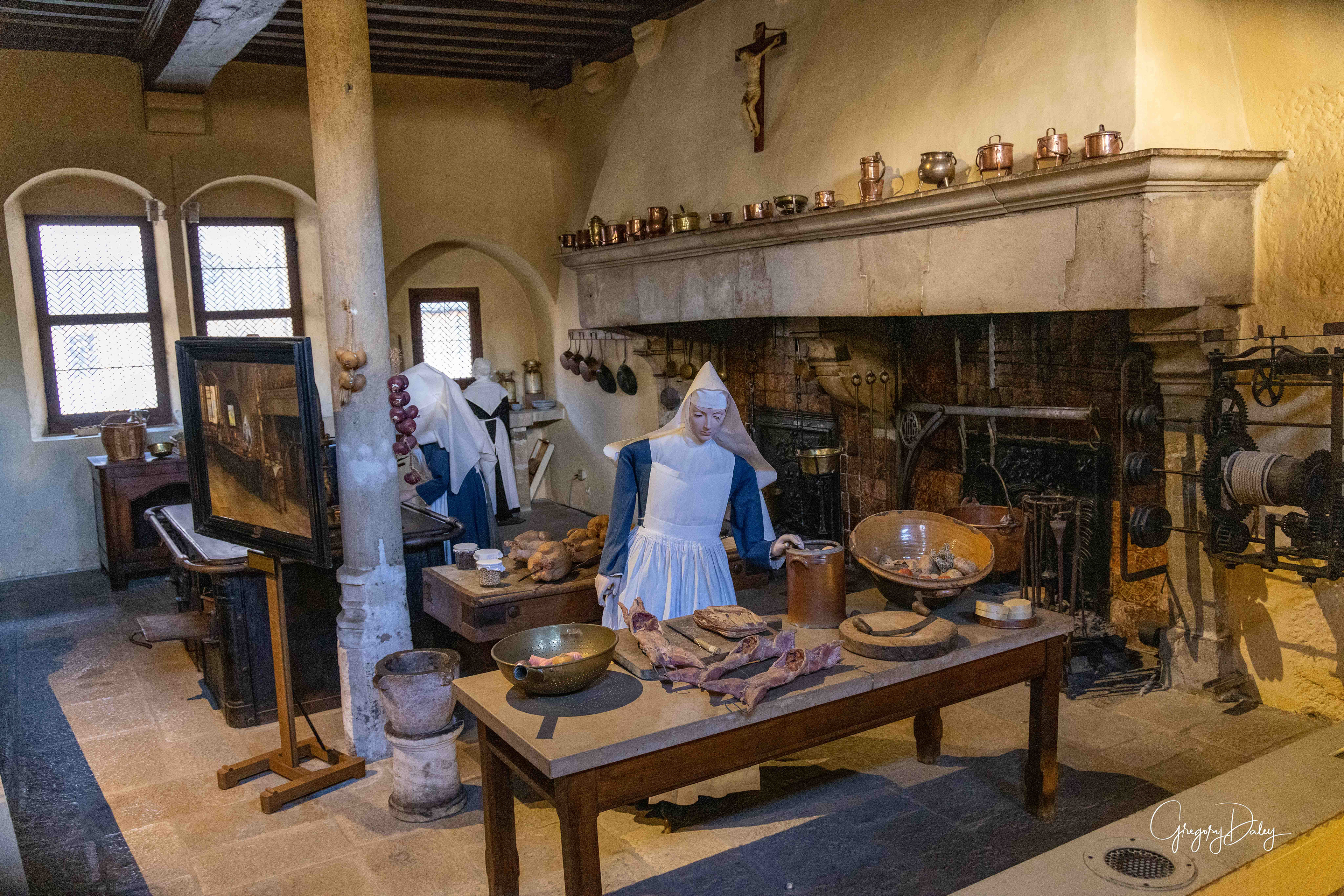

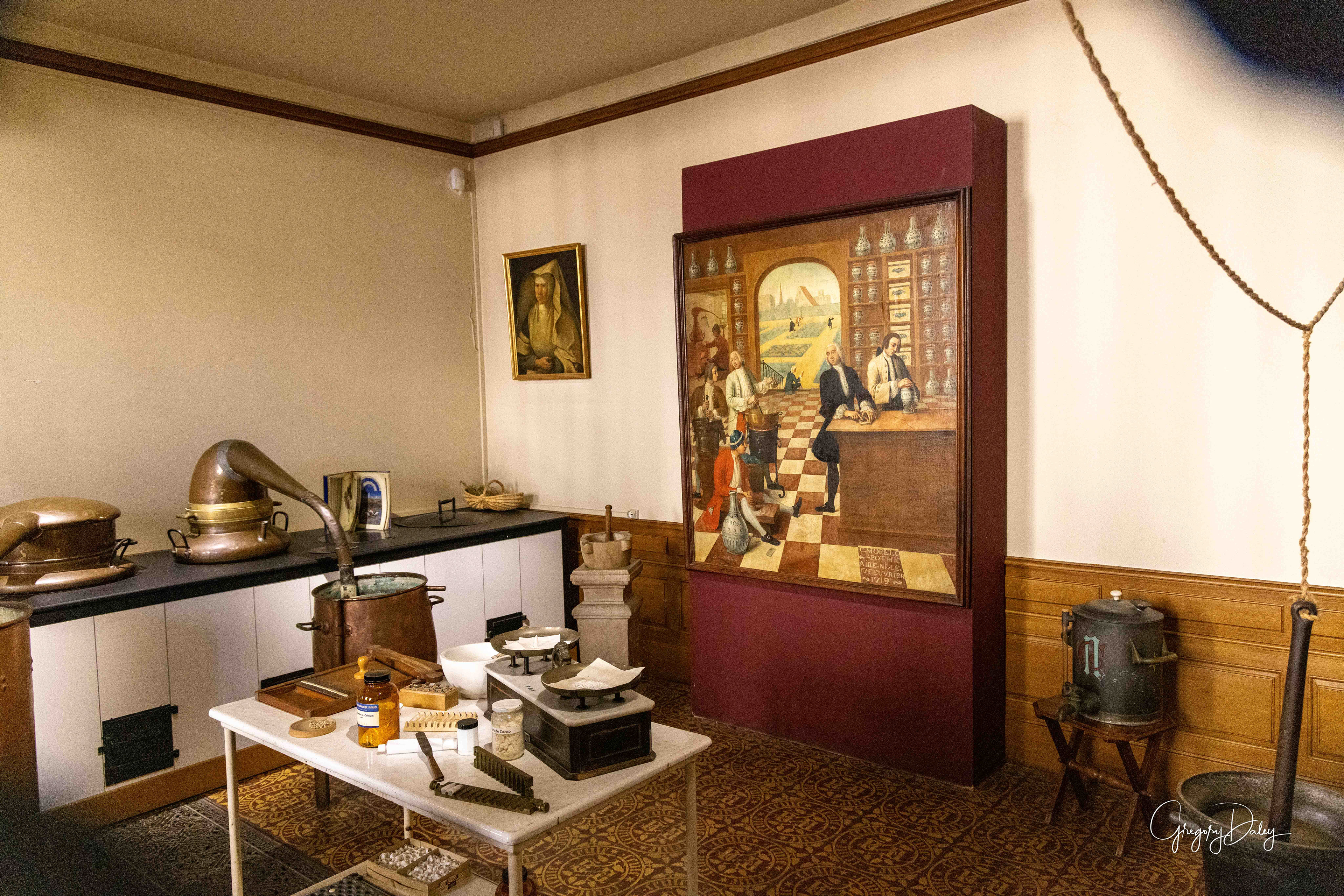
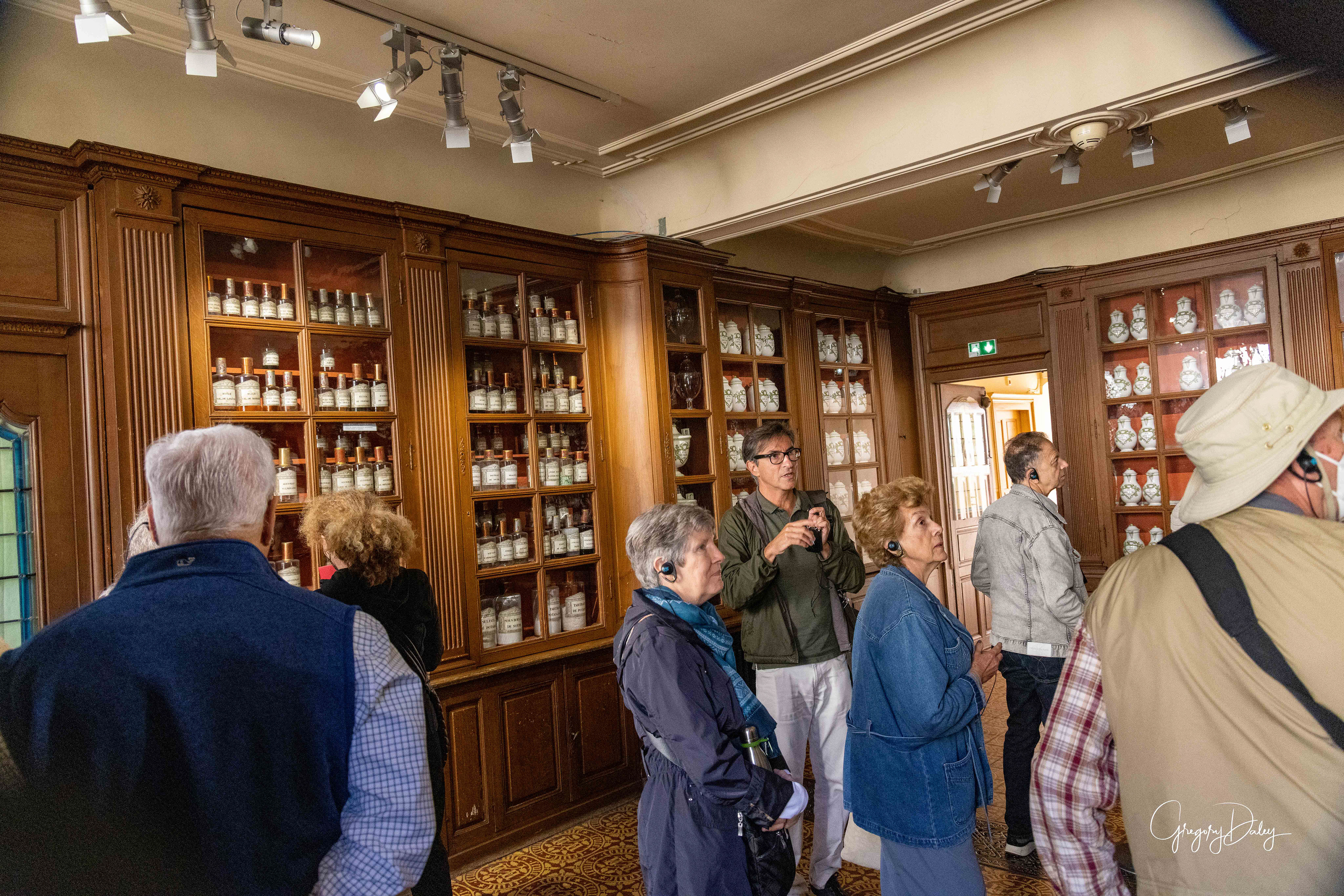
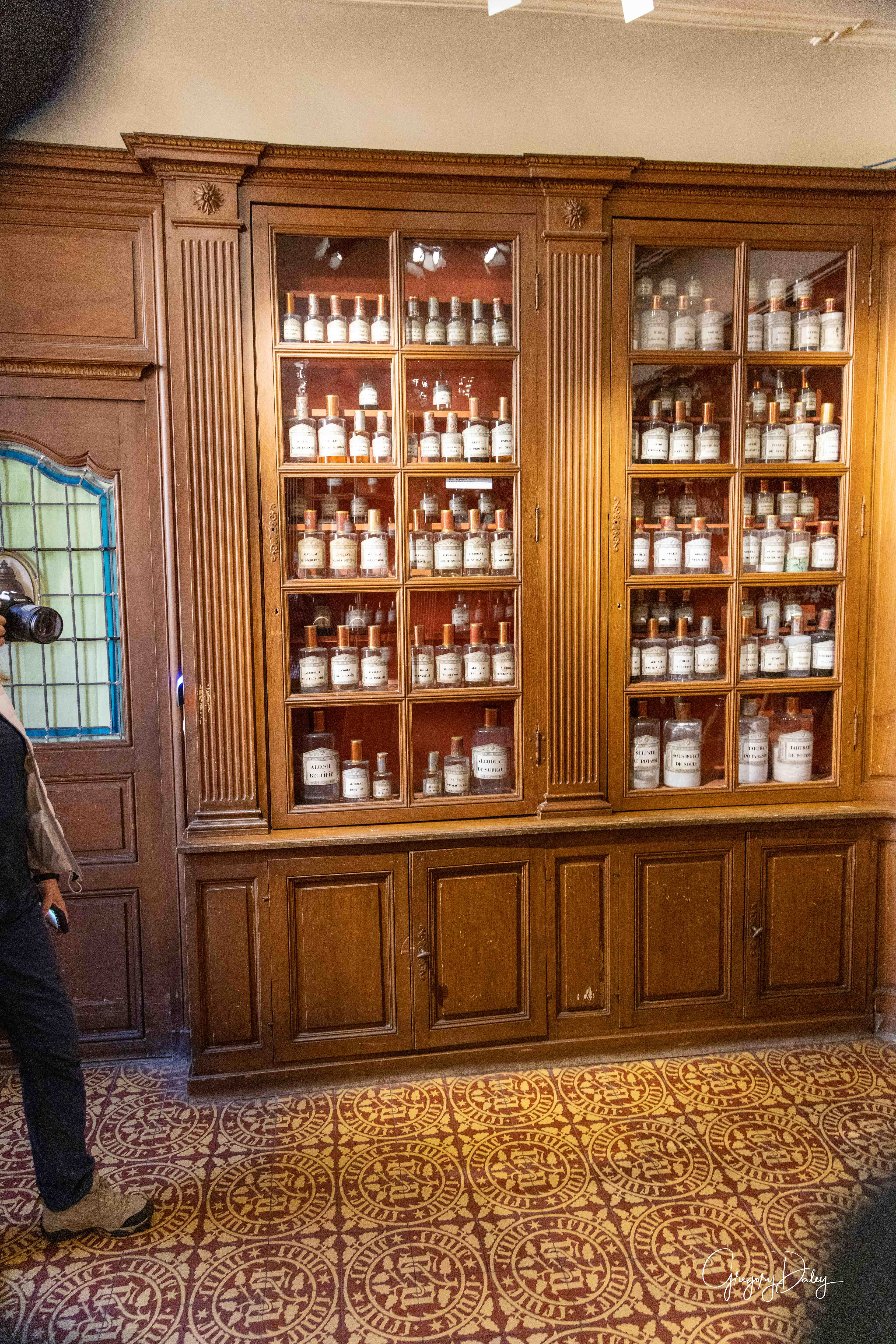
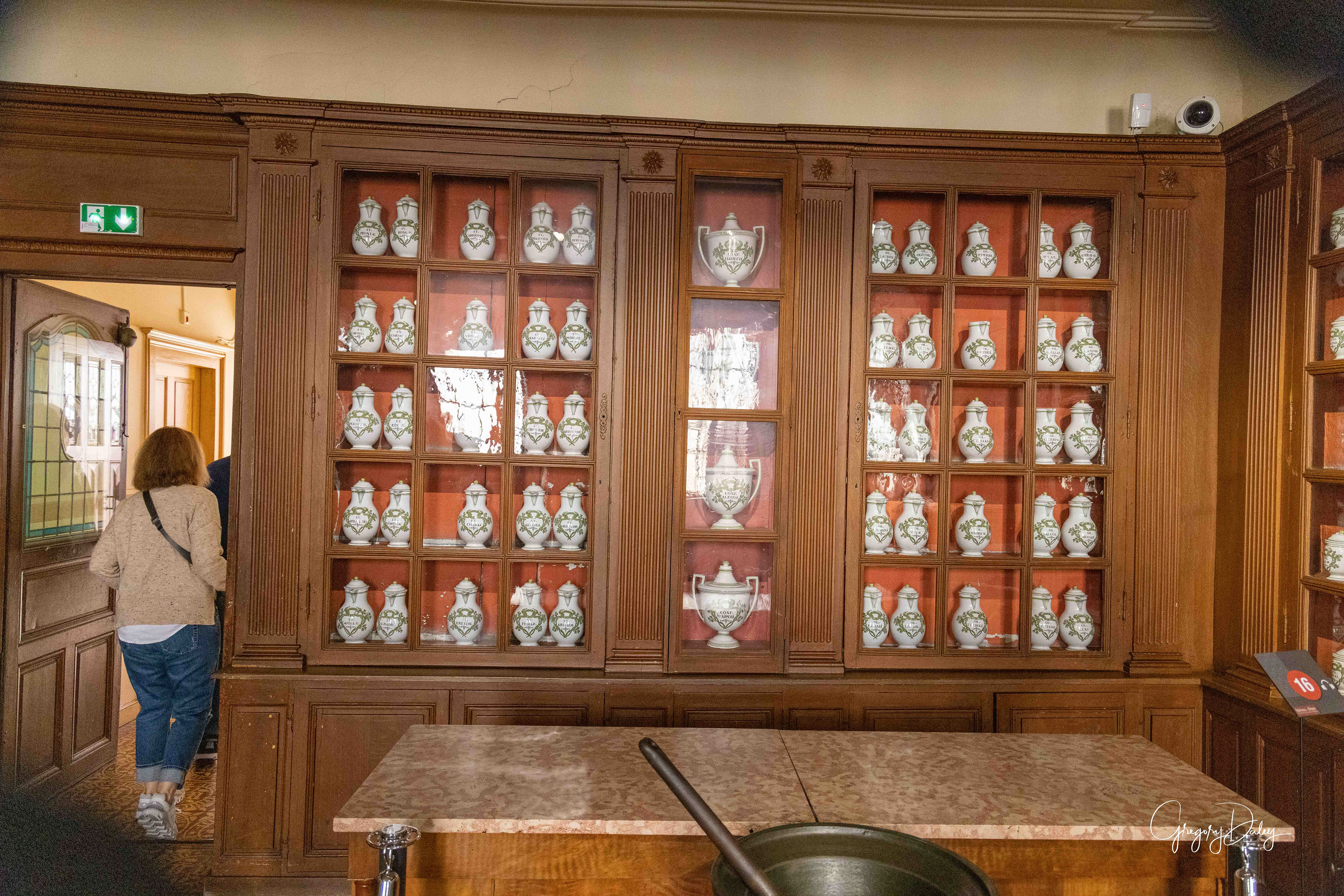
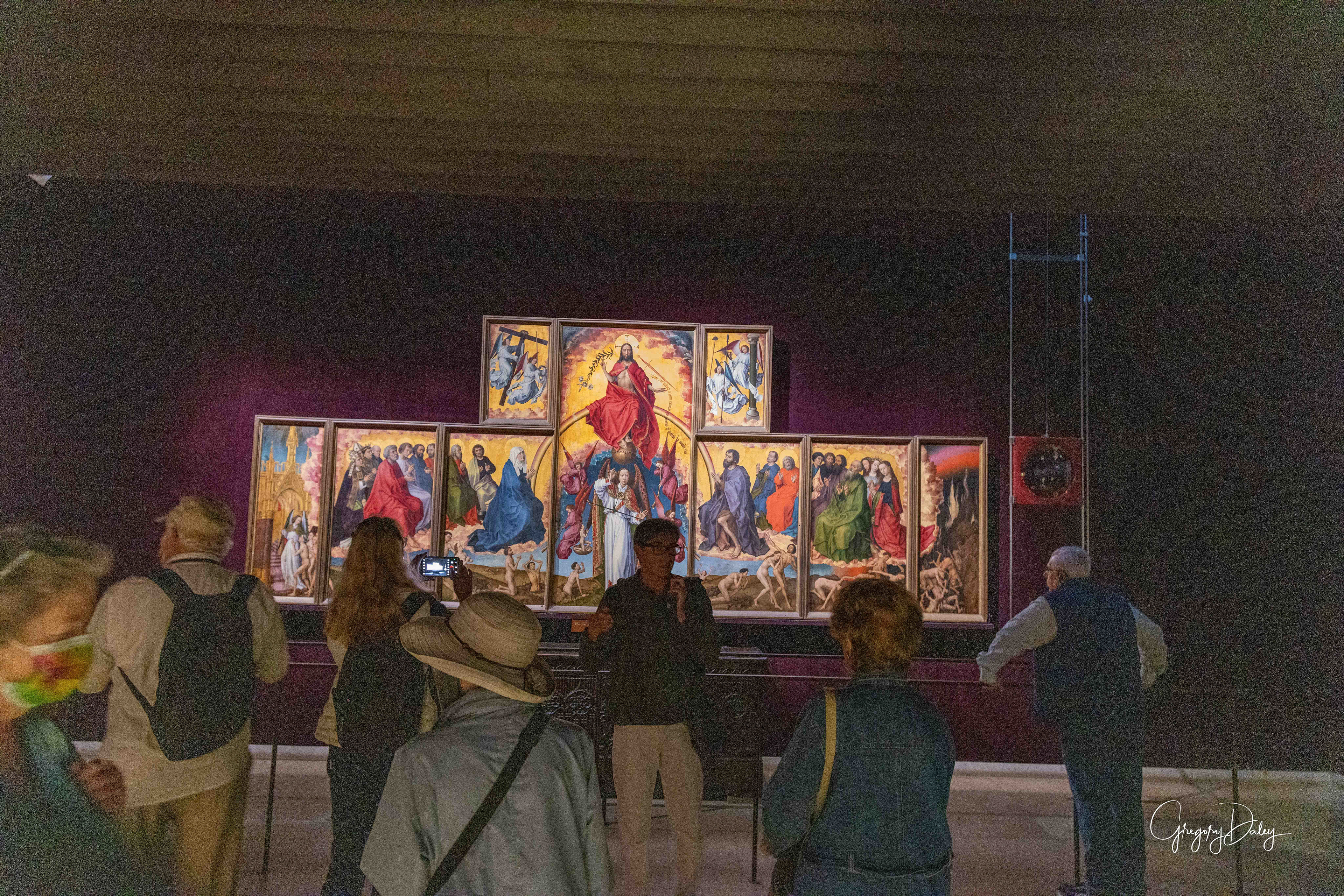
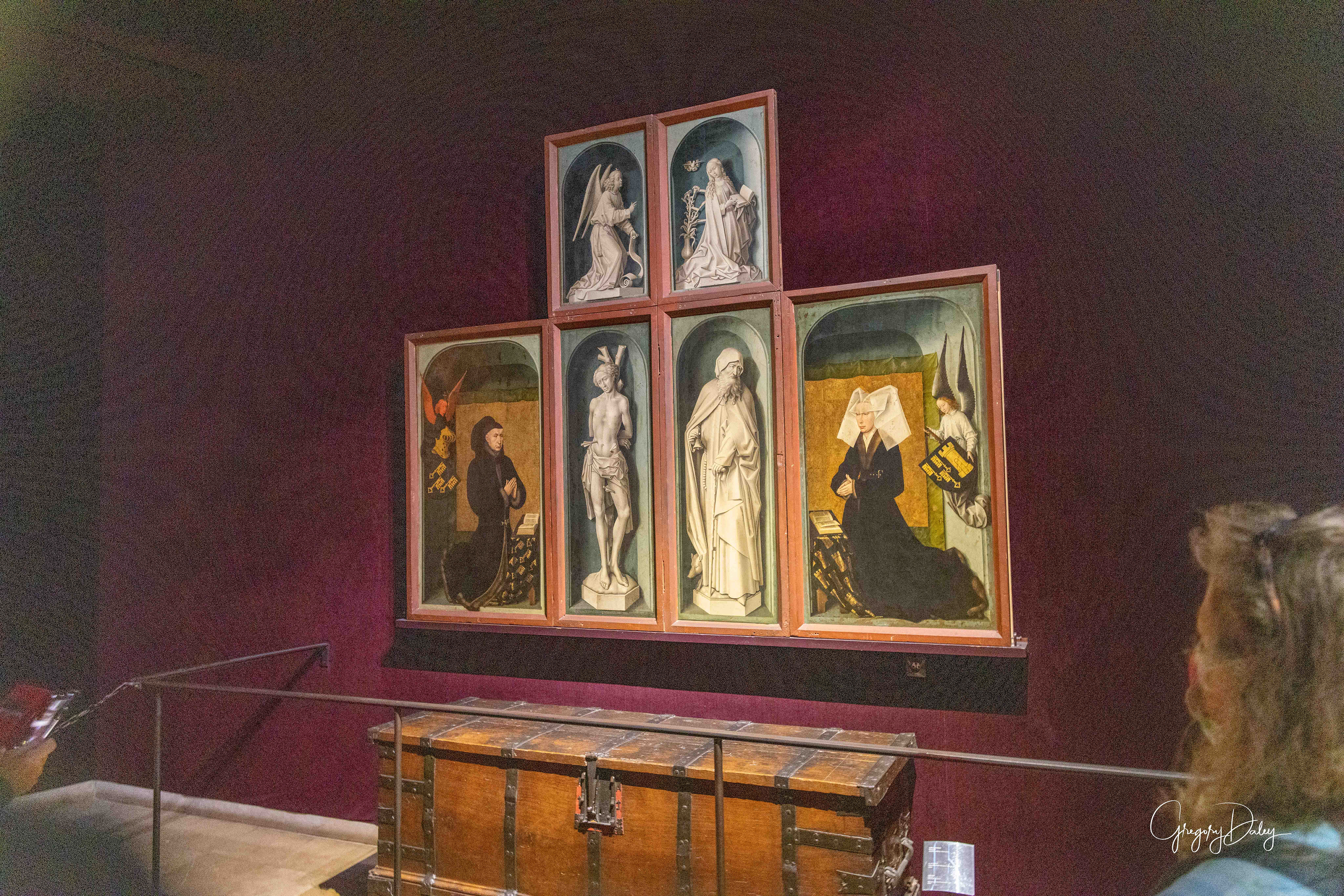
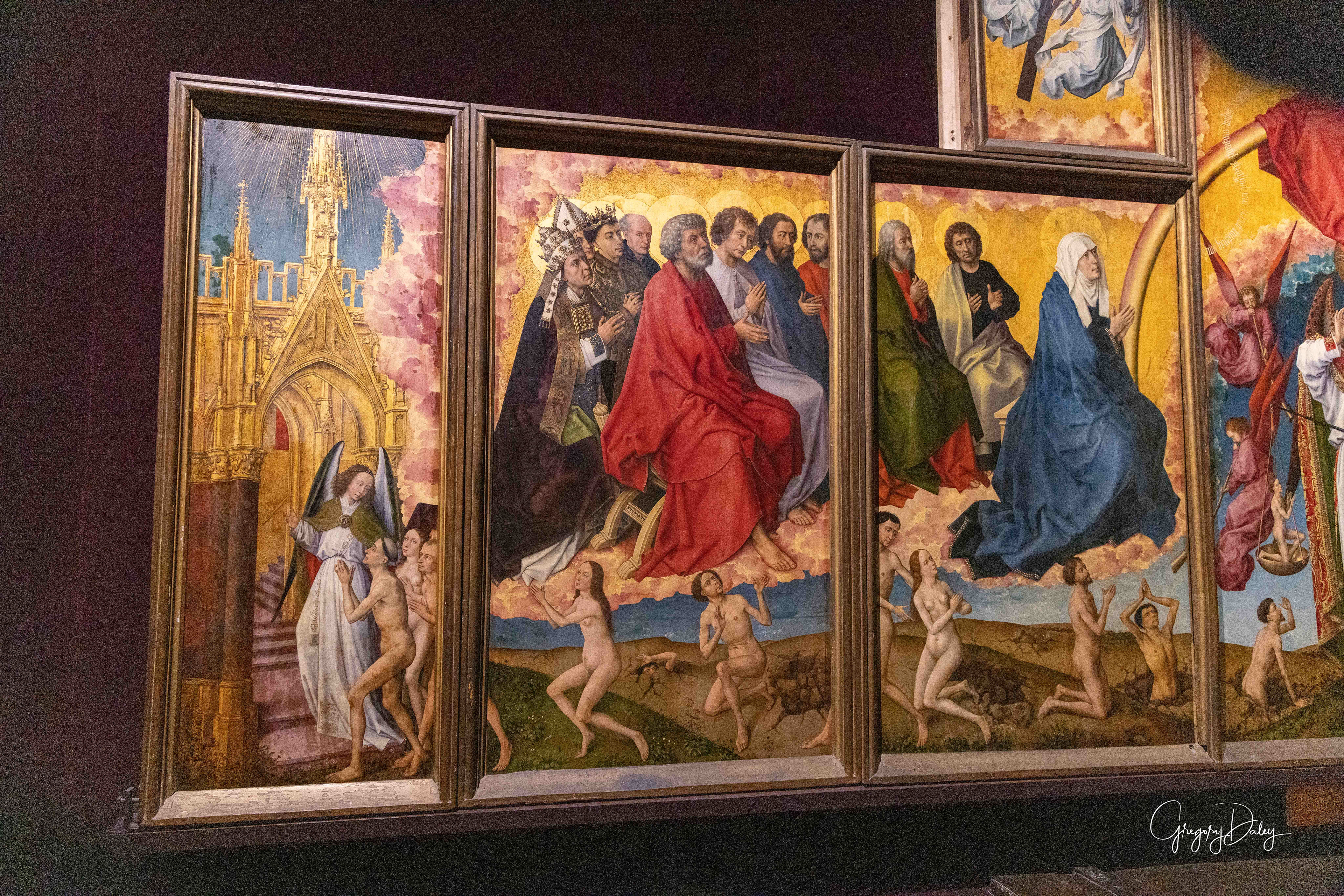
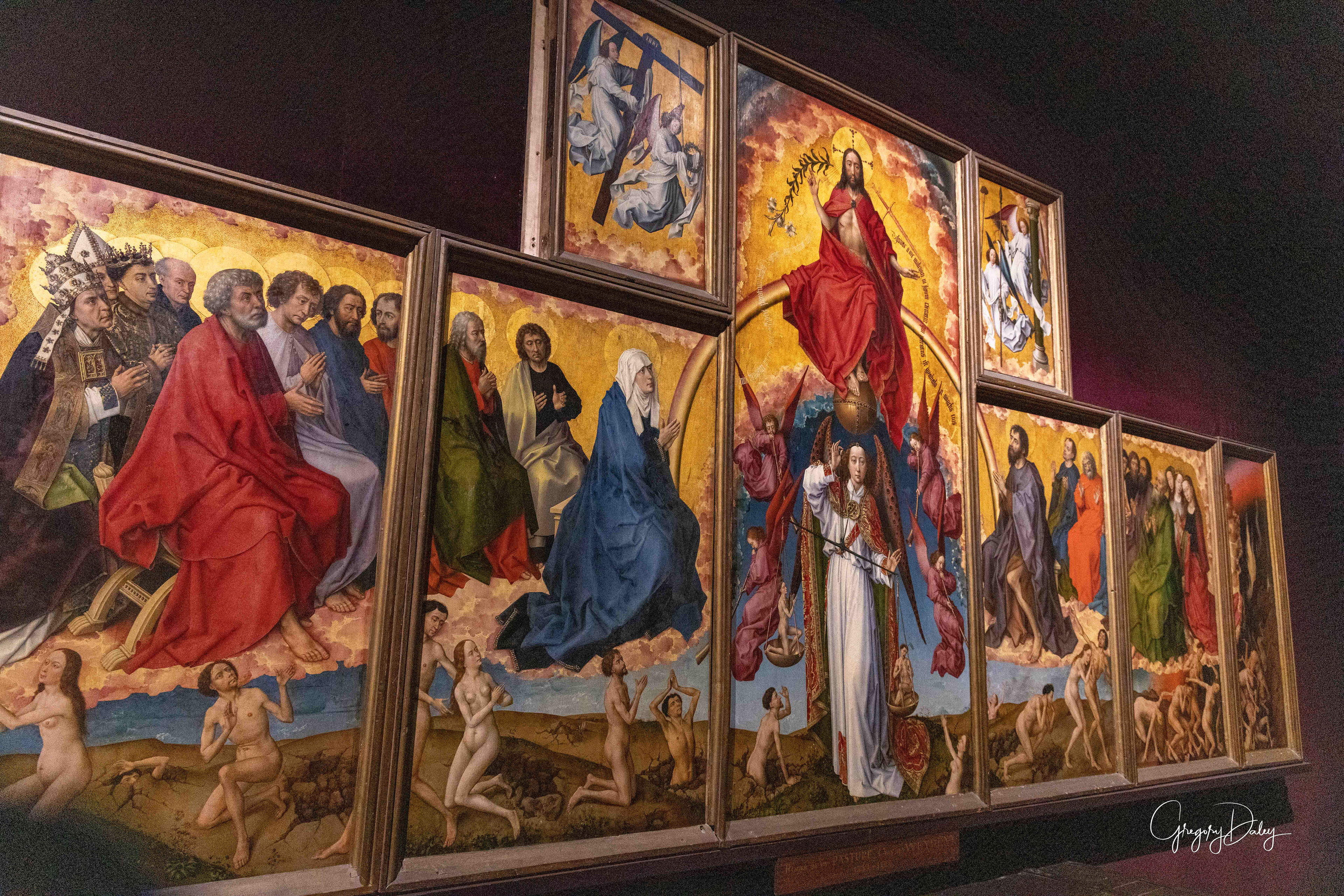
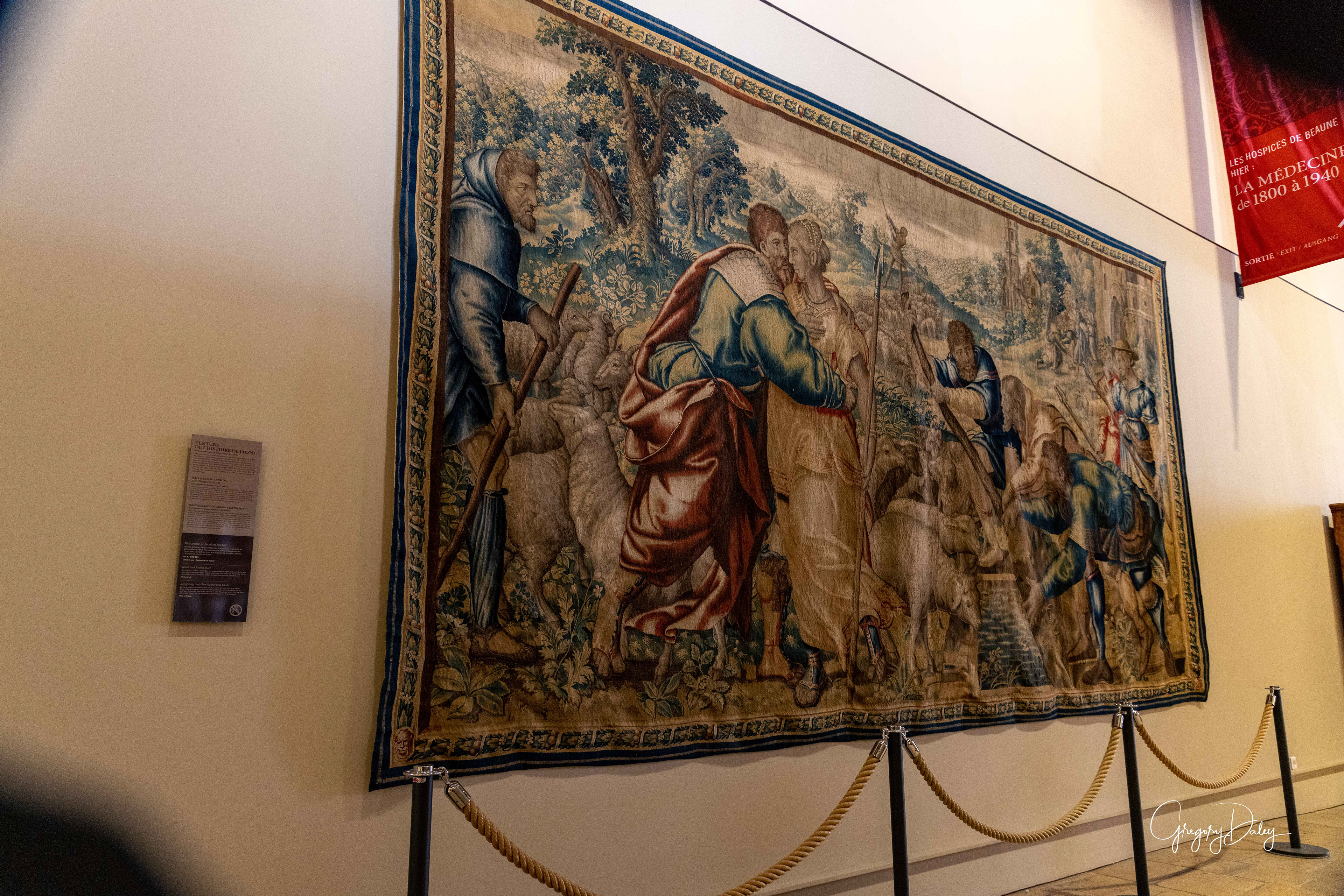

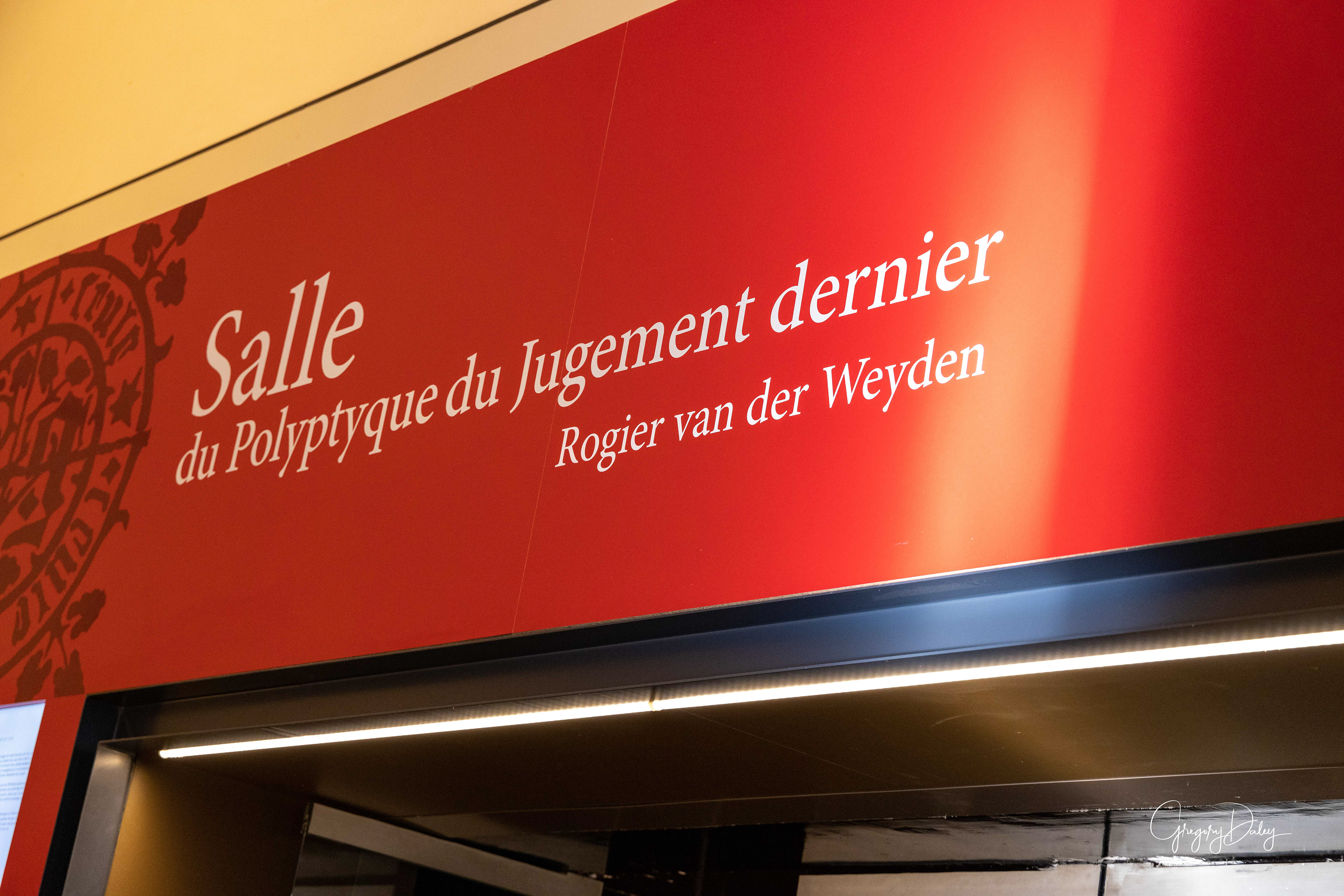
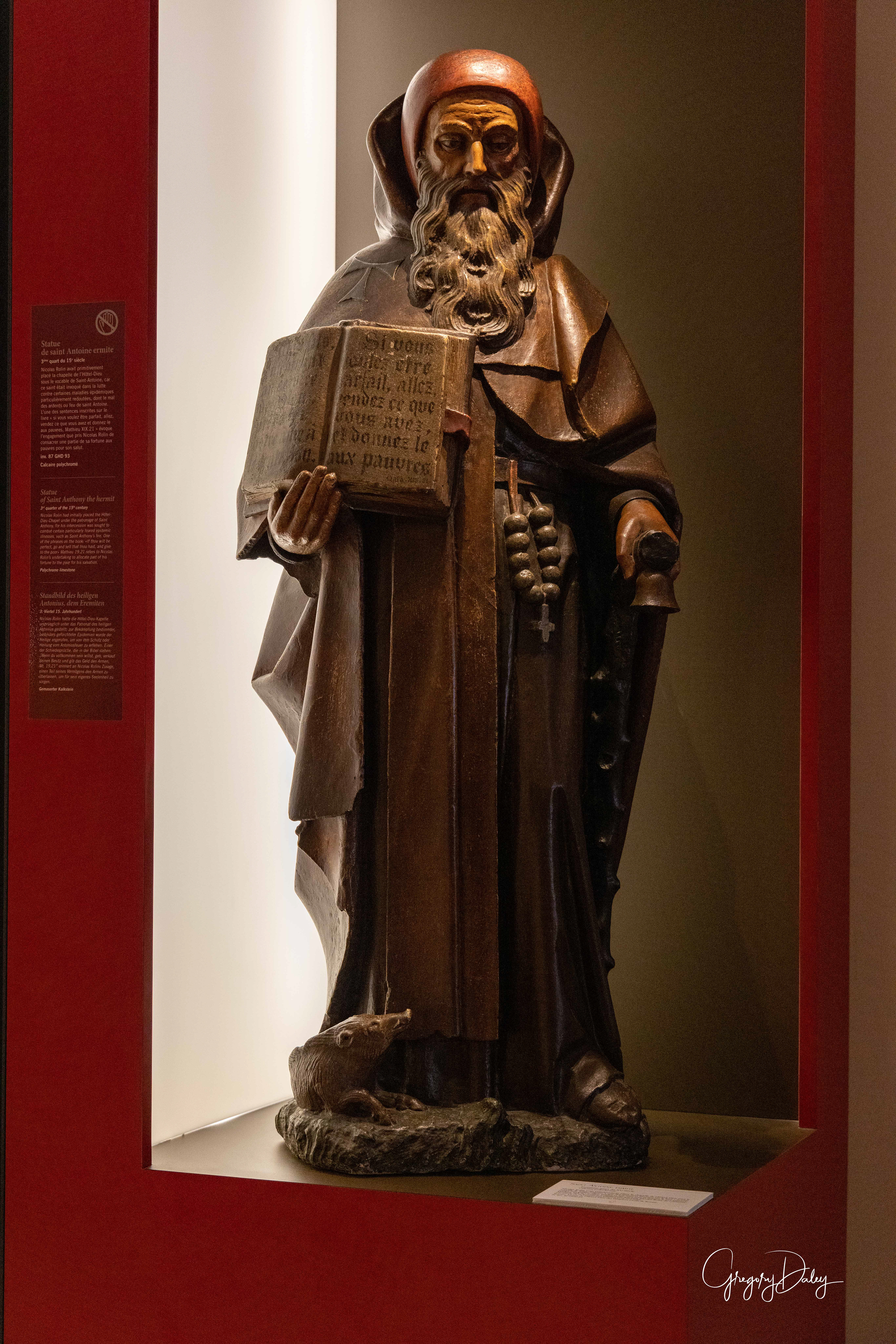
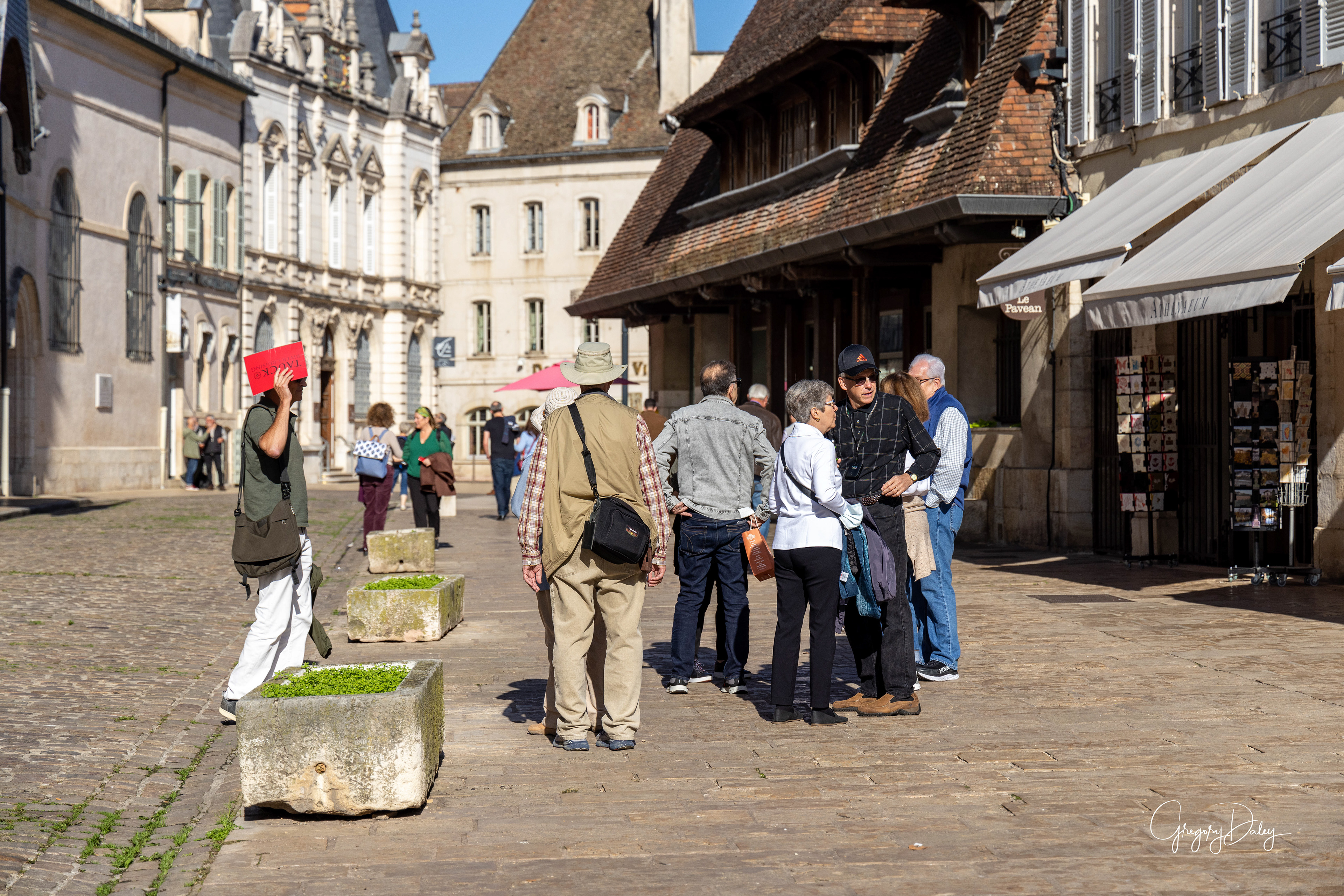
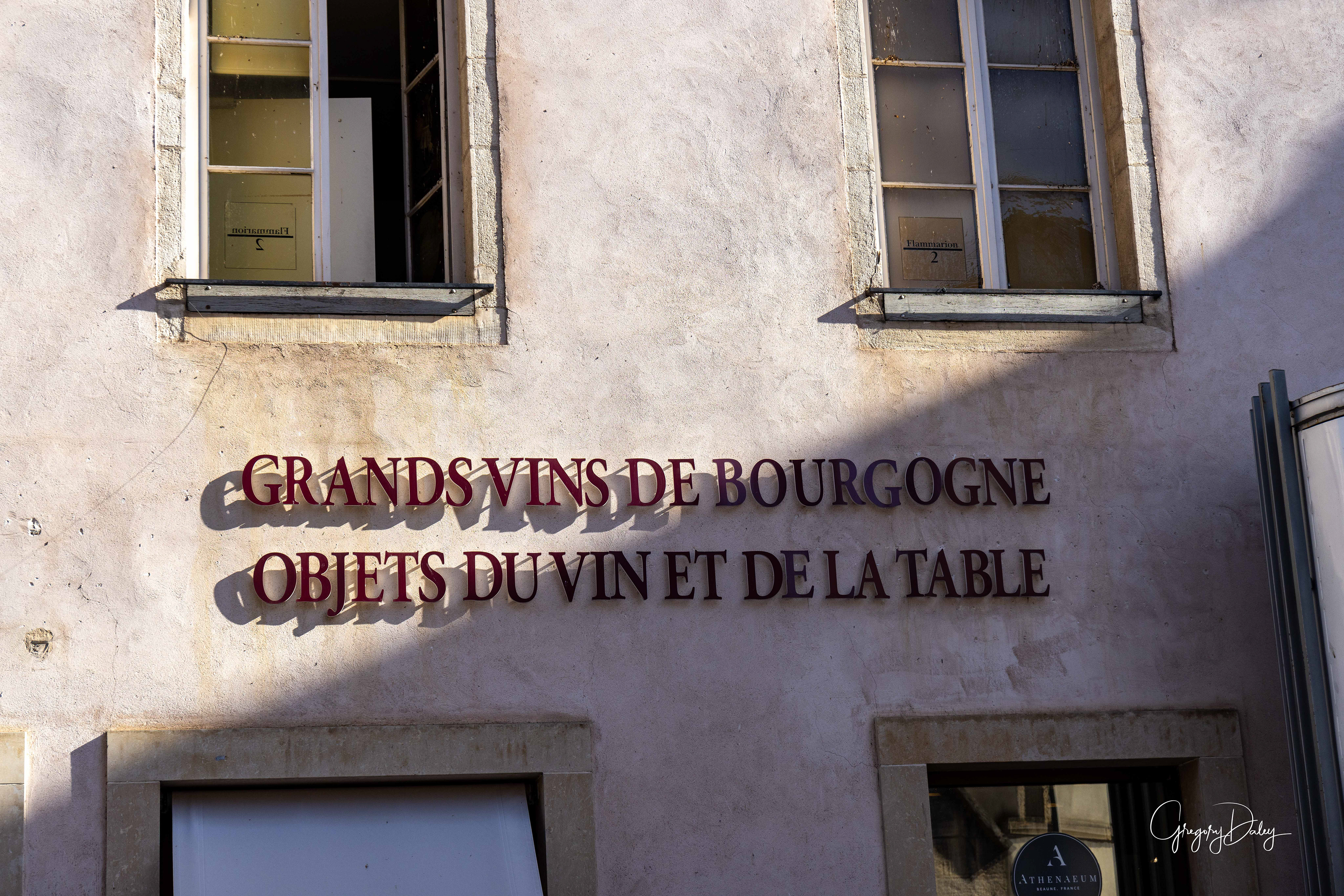
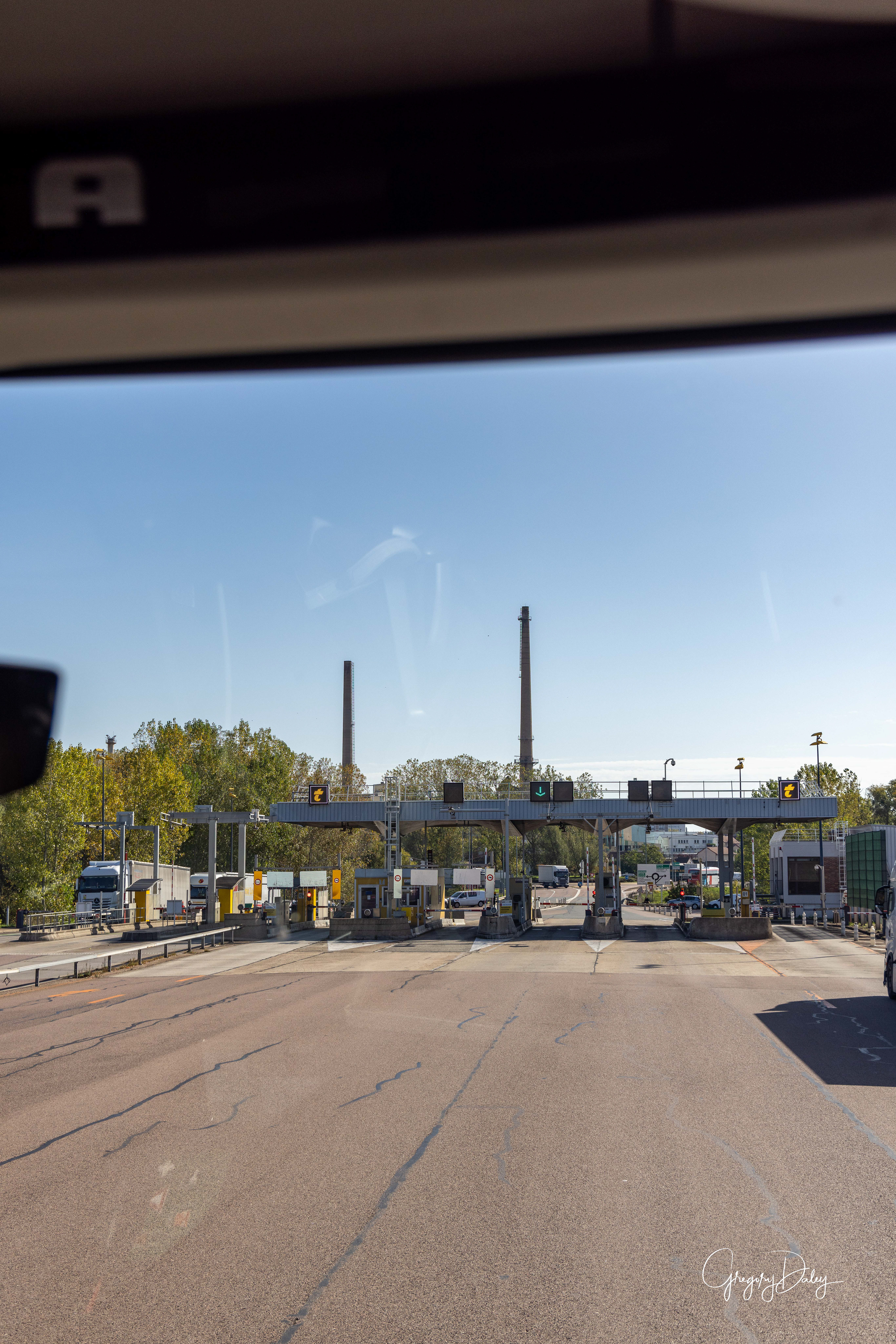

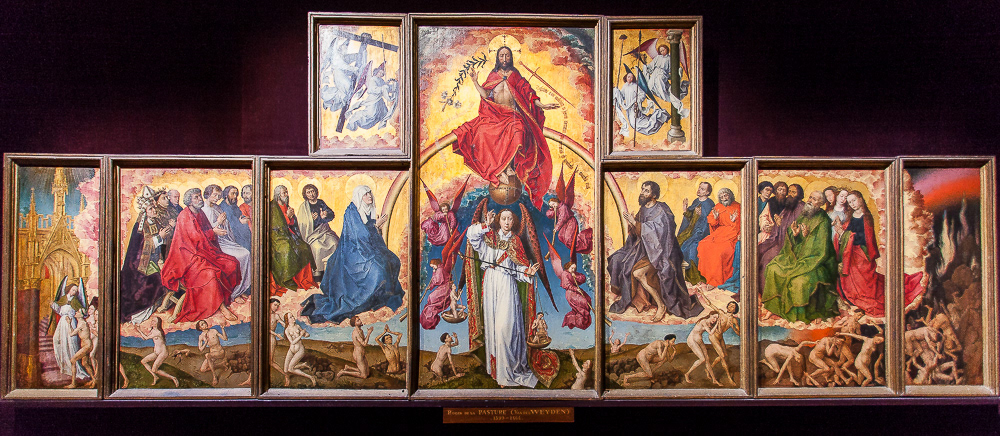
10/18, Day 9 of tour Beaune is the wine capital of Burgundy in the Côte d'Or department in eastern France. It is located between Lyon and Dijon. Beaune is one of the key wine centers in France, and the center of Burgundy wine production and business. The annual wine auction of the Hospices de Beaune is the primary wine auction in France. The town is surrounded by some of the world's most famous wine villages, while the facilities and cellars of many producers, large and small, are situated in the historic center of Beaune itself, as they have been since Roman times. With a rich historical and architectural heritage, Beaune is considered the "Capital of Burgundy wines". It is an ancient and historic town on a plain by the hills of the Côte d'Or, with features remaining from the pre-Roman and Roman eras, through the medieval and renaissance periods. Beaune is a walled city, with about half of the battlements, ramparts, and the moat, having survived in good condition. The central "old town" or "vieille ville" is extensive. Historically Beaune is intimately connected with the Dukes of Burgundy. The 15th-century Hospices de Beaune, in the town center, is one of the best preserved renaissance buildings in Europe. Other landmarks in Beaune include the old market (les Halles), the Beffroi (clock tower), and the collegiate church of Notre Dame. Beaune is the main center for the "Burgundian tile" polychrome renaissance roofing style of the region. Because of its historical importance in wine production and the unique system of terroir in the region, the town of Beune was inscribed on the UNESCO World Heritage List in 2015 as part of the Climats, terroirs of Burgundy site. The Hôtel-Dieu was founded on 4 August 1443, when Burgundy was ruled by Duke Philip the Good. The Hundred Years' War had recently been brought to a close by the signing of the Treaty of Arras in 1435. Massacres, however, continued with marauding bands (écorcheurs) still roaming the countryside, pillaging and destroying, provoking misery and famine. The majority of the people of Beaune were destitute, and the area had recently suffered an outbreak of plague. Nicolas Rolin, the Duke's Chancellor, and his wife Guigone de Salins, responded by building a hospital and refuge for the poor. Having gained permission from Pope Eugene IV in 1441, the hospice was built and consecrated on 31 December 1452. In conjunction, Rolin established the "Les sœurs hospitalières de Beaune" religious order. The building's design was probably overseen by the Flemish architect Jacques Wiscrère and remained as a hospital until 1971. There is a documentary record of a large range of Flemish and French masons, painters and glass cutters employed for its construction. The façade is today regarded as a superior example of Northern Renaissance civic architecture and a treasure trove of panel painting, given its numerous portraits of Rolin, his wife and members of his extended family. The Hospices de Beaune consists of a pair of two-storied buildings arranged around a stone courtyard. The building wings are well-preserved today; they contain half-timber galleries and ornate rooftops with dormer windows. The hospital is arranged so that the wings served the office, kitchen and apothecary functions. The nuns and patients were housed nearer the chapel, towards the center of the complex. The Hospices de Beaune received the first patient on 1 January 1452. Elderly, disabled and sick people, with orphans, women about to give birth and the destitute have all been uninterruptedly welcomed for treatment and refuge from the Middle Ages until today. This Catholic institution focused on healing both the body and spirit of its patients. Over the centuries, the hospital radiated outwards, grouping with similar establishments in the surrounding villages of Pommard, Nolay, Meursault. Many donations - farms, property, woods, works of art and of course vineyards - were made to it, by grateful families and generous benefactors. The institution is one of the best and oldest examples of historical, philanthropic, and wine-producing heritage, and has become linked with the economic and cultural life of Burgundy.































































